To view photo images scroll right on laptop or down on Iphone
“A miniscule moment in history deeply shrouded under a veil of mysticism, exoticism and romance, monumental in its celebration of a distant foreign space and time.” ~ Barry Ace
In 2010, at the invitation of artist Robert Houle, Ace travelled to Paris, France and undertook four site-specific dance performances honouring the Anishinaabe dance troupe lead by Maungwudaus (George Henry), originally from the Mississaugas of New Credit First Nation near Brantford, Ontario. After touring in upstate New York, by 1843 his troupe set sail from New York for Europe. After landing and touring London, England, they travelled to Paris, France performing in George Catlin’s Indian Curiosities for five months. While in Europe, their travels would take them throughout Belgium, England, Scotland and Ireland. On April 23, 1848, after 5 years in Europe, Maungwudaus and his surviving dance troupe, who had not succumbed to small-pox, returned to New York on the vessel Yorktown.
Upon his return to North Amercia, Maungwudaus penned an essay An Account of the Chippewa Indians, Who Have Been Travelling Among the Whites in the United States, England, Ireland, Scotland, France and Belgium (Boston, 1848). From the humourous to the tragic, this first person account documents Maungwudaus and his troupe’s travels and observations throughout 19th century Europe.
It was in 2006, while on a Canada Council for the Arts Paris Studio residency, that Houle uncovered the sketches of French painter Eugène Delacroix depicting Maungwudaus and his dance troupe, as in Delacroix’s drawing Cinq études d’indiens. It would be this first encounter with these original sketches that over 160 years later would inform Houle’s 2010 multimedia installation Paris/Ojibwa.
Inspired by Houle’s Paris/Ojibwa, Ace undertook four honouring dance performances in full regalia that were based on four of dancers from Maungwudaus’ dance troupe. The piece entitled A Reparative Act was performed at four site-specific locations in downtown Paris: Maungwudaus (Great Hero), Louvre; Noodinokay (Furious Storm), Jardin des Tuileries; Mishshemong (King of the Loons), Place de la Concorde; Saysaygon (Hail Storm), L’esplanade des Invalides.
Deb Chansonneuve, one of the invited guests who travelled to Paris for the exhibition, wrote on Houle’s installation and Ace’s performance in her reflective essay, The Role of Art in Decolonization and Healing from History.
The dance performances were also documented by artist Shelley Niro and included in the film Robert’s Paintings on the life and work of Robert Houle. In 2018, as a commission for the Ottawa Art Gallery’s inaugural exhibition, Àdisòkàmagan / Nous connaître un peu nous mêmes / We’ll-all-become-stories, that opened in their new facility, Niro produced Homage to Four in Paris, poignant footage of Ace’s honouring dances.
In 2012, Ace won the Ontario Association of Art Galleries Curatorial Writing Award for his essay A Reparative Act written for the Paris/Ojibwa catalogue. The jurors stated, “The dancer’s words resonate long-after the performative act. Barry Ace’s words are replete with grace, care and reconciliation.”
RELATED TEXTS
A Reparative Act by Barry Ace (2011)
An Account of the Chippewa Indians by Maungwudaus (1848)
The Role of Art in Decolonization and Healing from History by Deb Chansonneuve (2010)
Homage to Four in Paris by Shelley Niro (2018)
Robert’s Paintings trailer by Shelley Niro (2010)
DOWNLOADABLE POSTERS (featuring images from Reparative Act performances)
Red Runners: The new objectification of Native art and Identity (2010)
A Reparative Act: Artist talk at History Department at Carleton University (2013)
Exhibition Catalogue Available from the AGO: Paris Ojibwa.
(Documentation Credit: Paul Gardner)
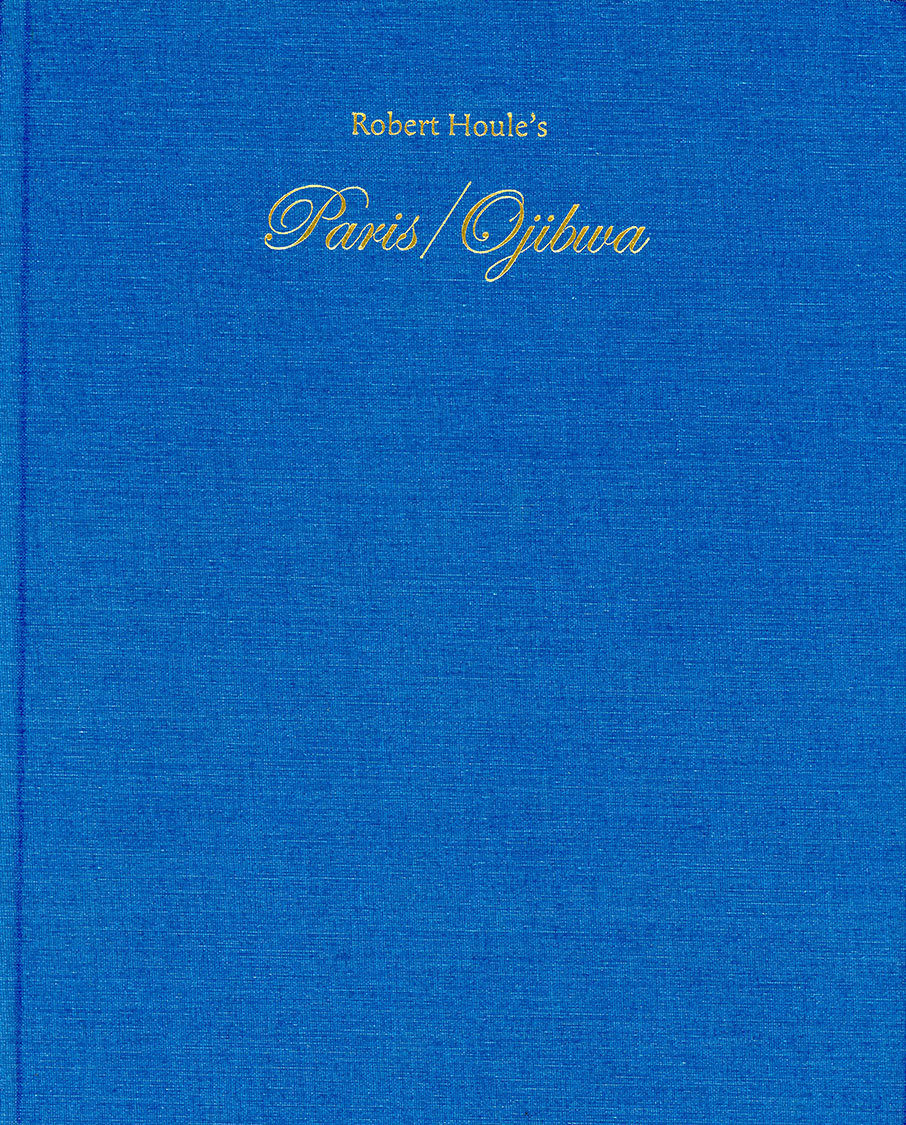 Catalogue for Robert Houle's "Paris / Ojibwa"
Catalogue for Robert Houle's "Paris / Ojibwa" 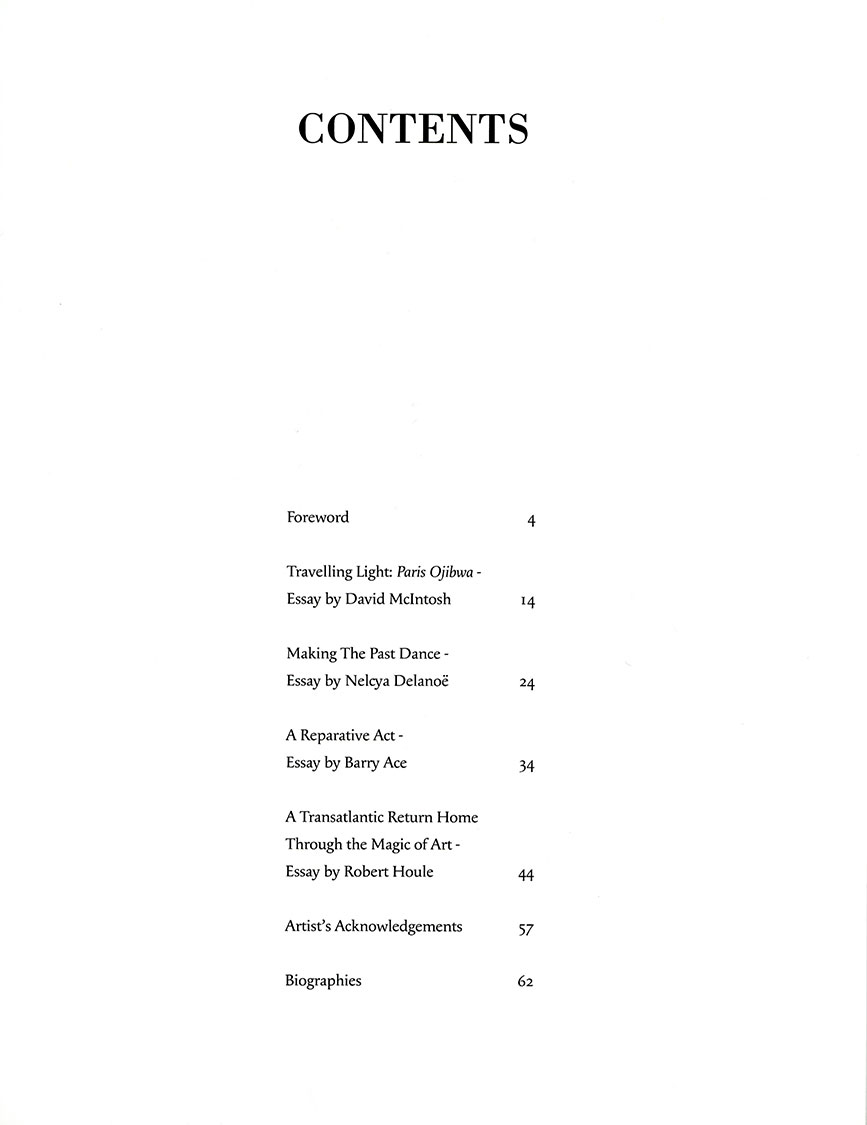 Table of Contents for Robert Houle's "Paris / Ojibwa"
Table of Contents for Robert Houle's "Paris / Ojibwa" 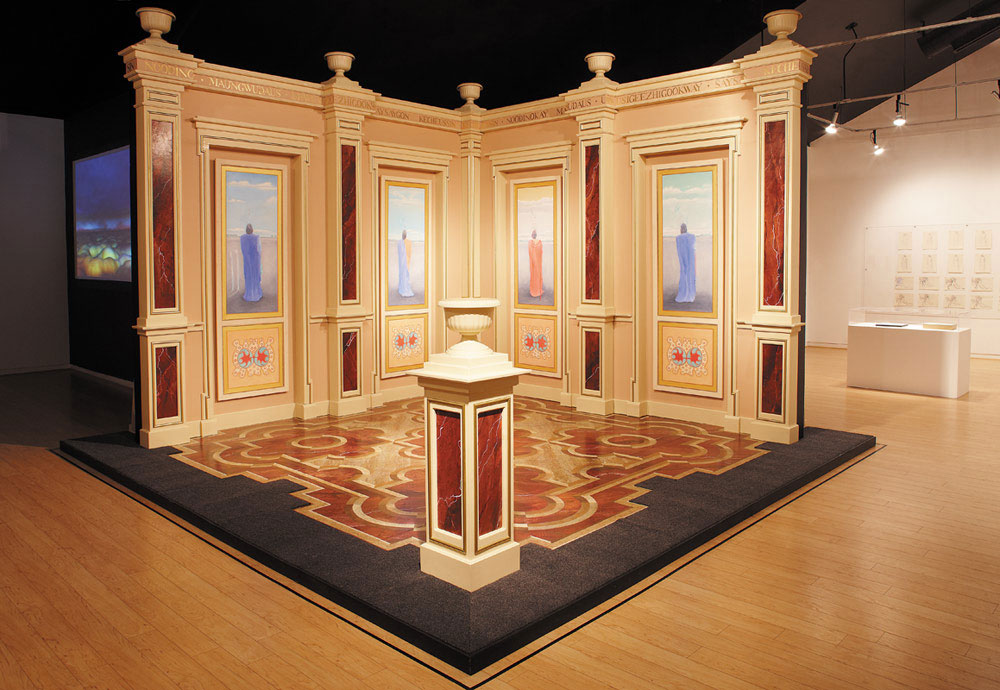 Installation of Robert Houle's "Paris / Ojibwa"
Installation of Robert Houle's "Paris / Ojibwa" 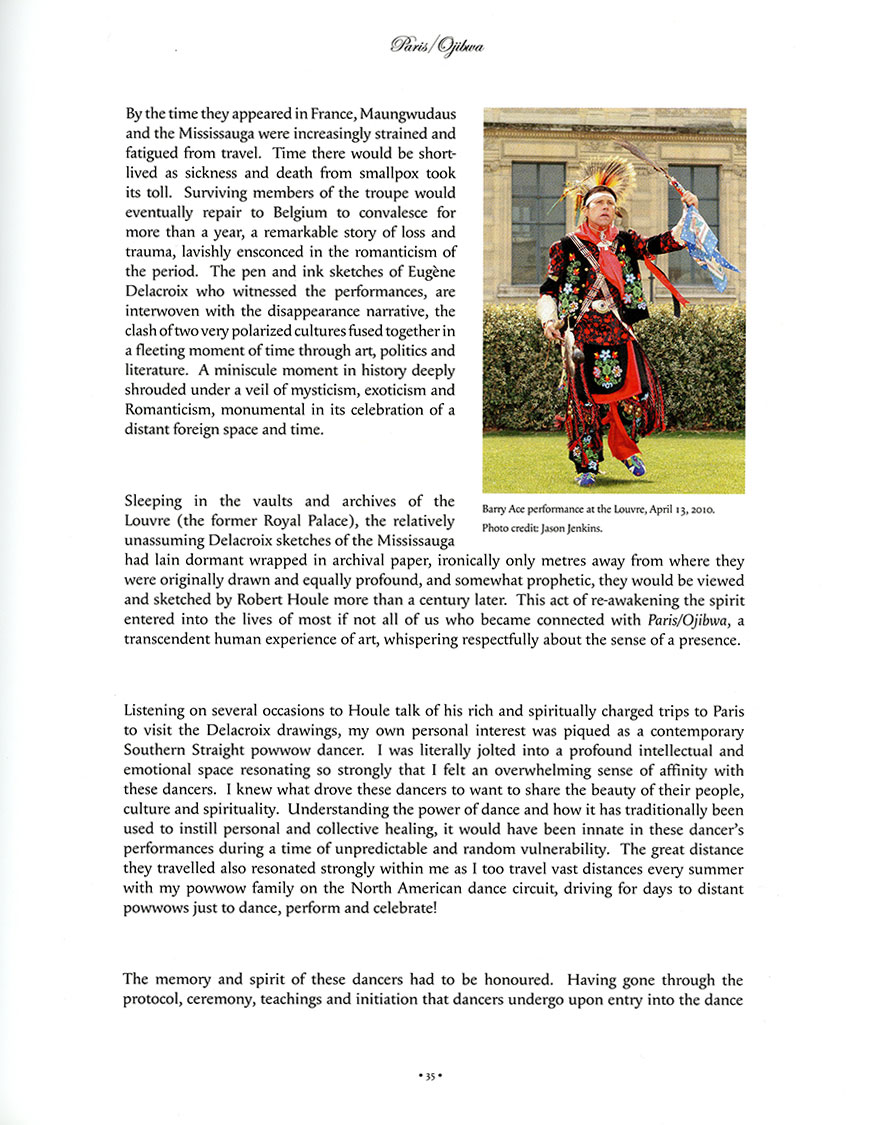 Excerpt of essay on "A Reparative Act"
Excerpt of essay on "A Reparative Act" 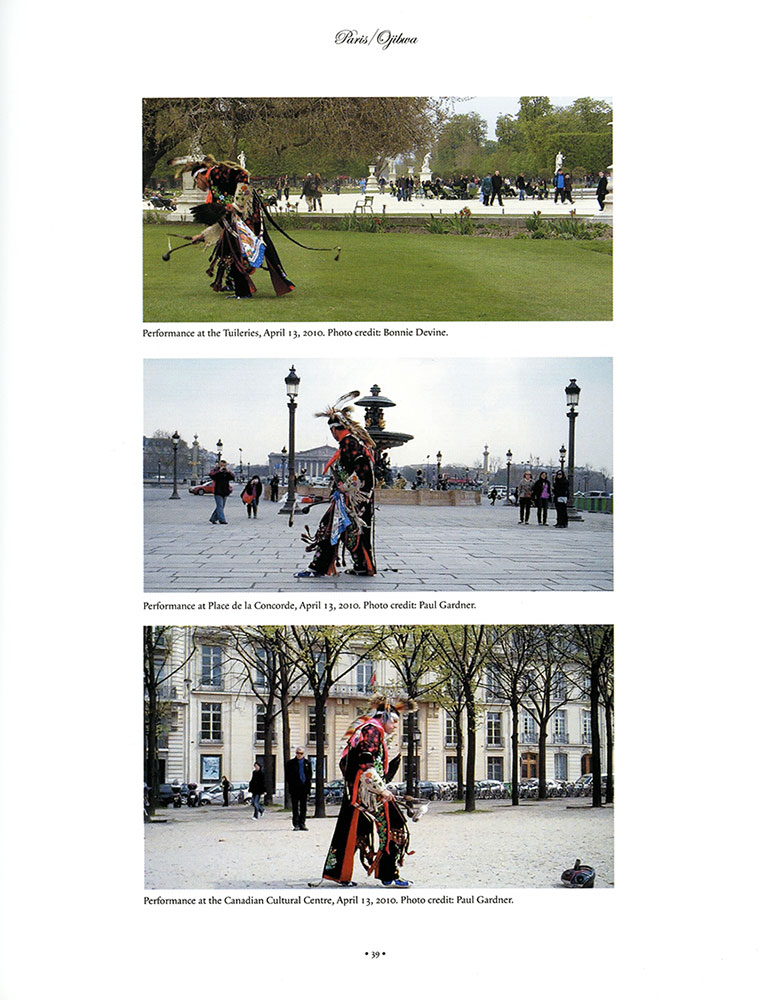 Excerpt of essay on "A Reparative Act"
Excerpt of essay on "A Reparative Act" 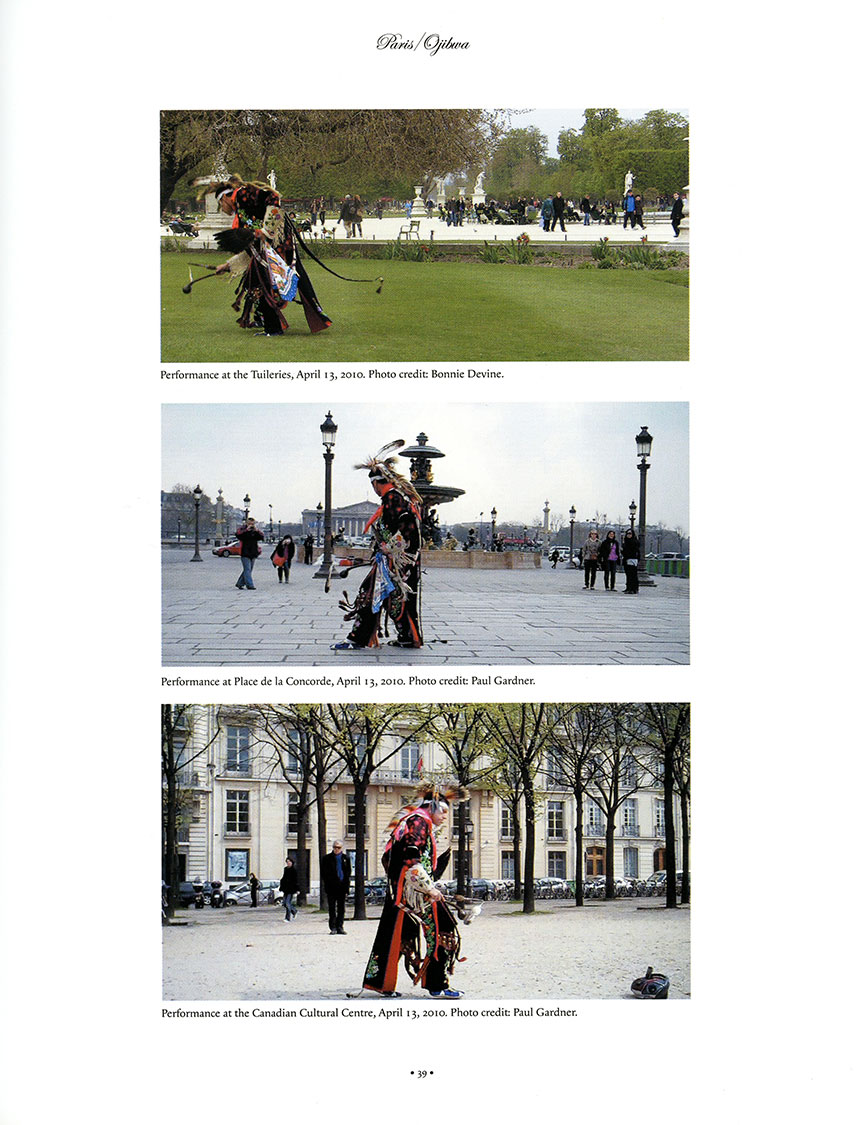 Excerpt of essay on "A Reparative Act"
Excerpt of essay on "A Reparative Act" 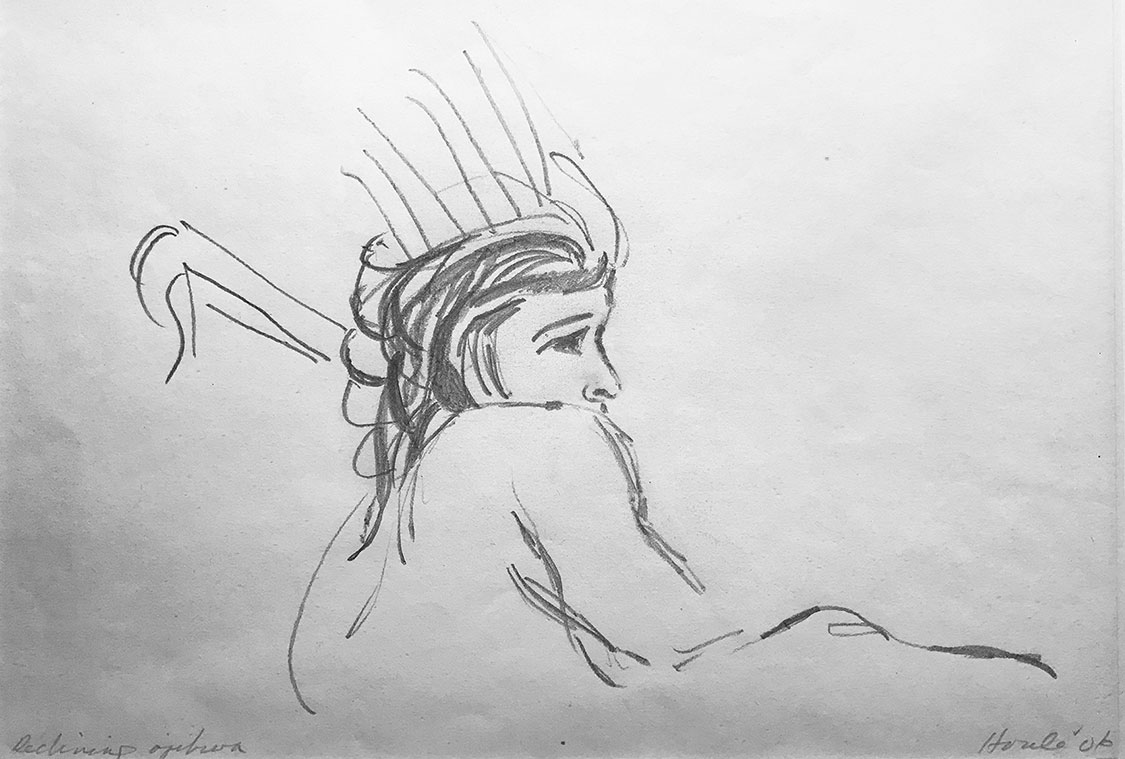 "Study for Reclining Ojibwa" (2006) Graphite on Paper, Robert Houle, Collection of Barry Ace.
"Study for Reclining Ojibwa" (2006) Graphite on Paper, Robert Houle, Collection of Barry Ace. 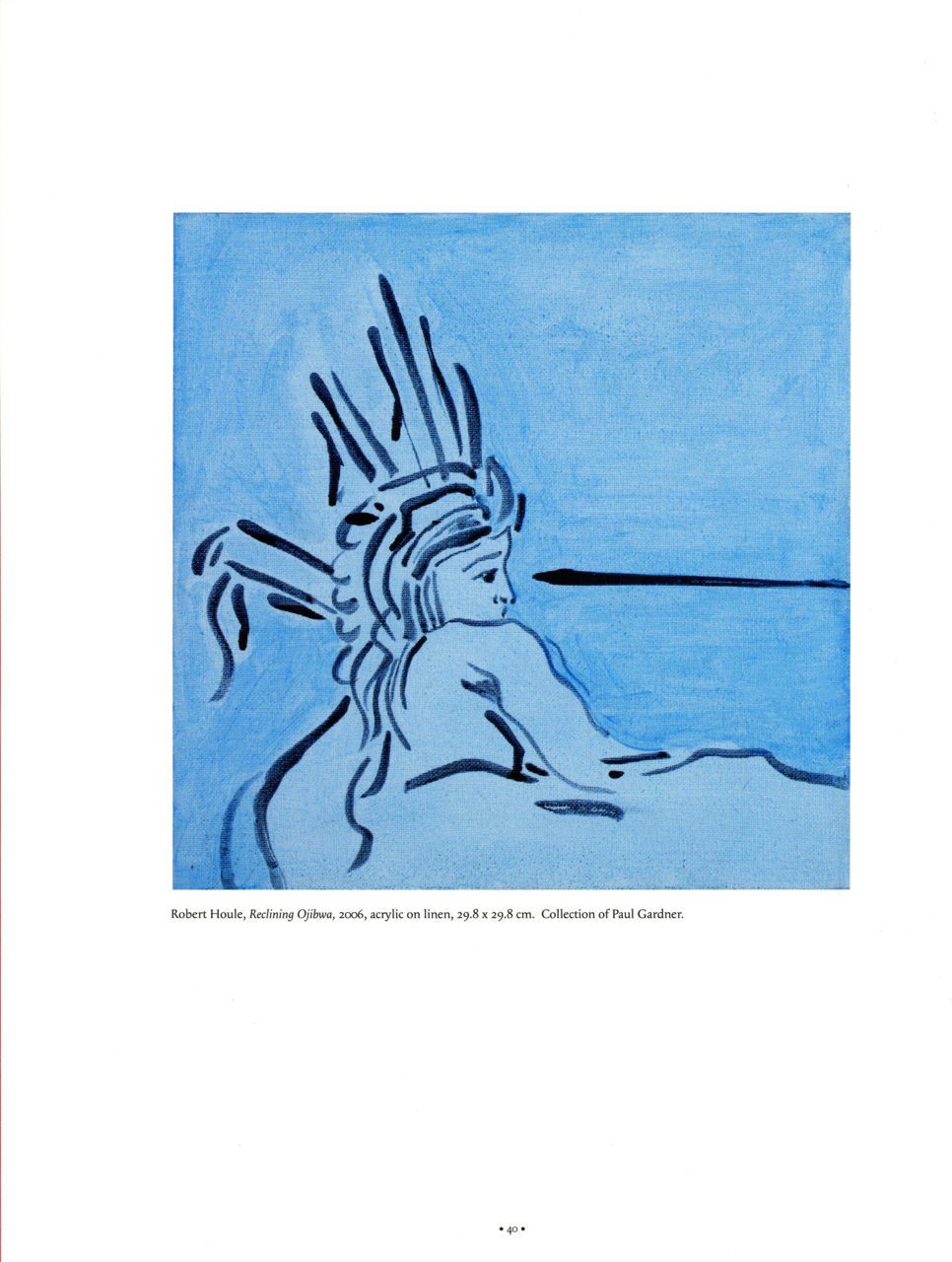 "Reclining Ojibwa" by Robert Houle in "Paris/Ojibwa" catalogue
"Reclining Ojibwa" by Robert Houle in "Paris/Ojibwa" catalogue 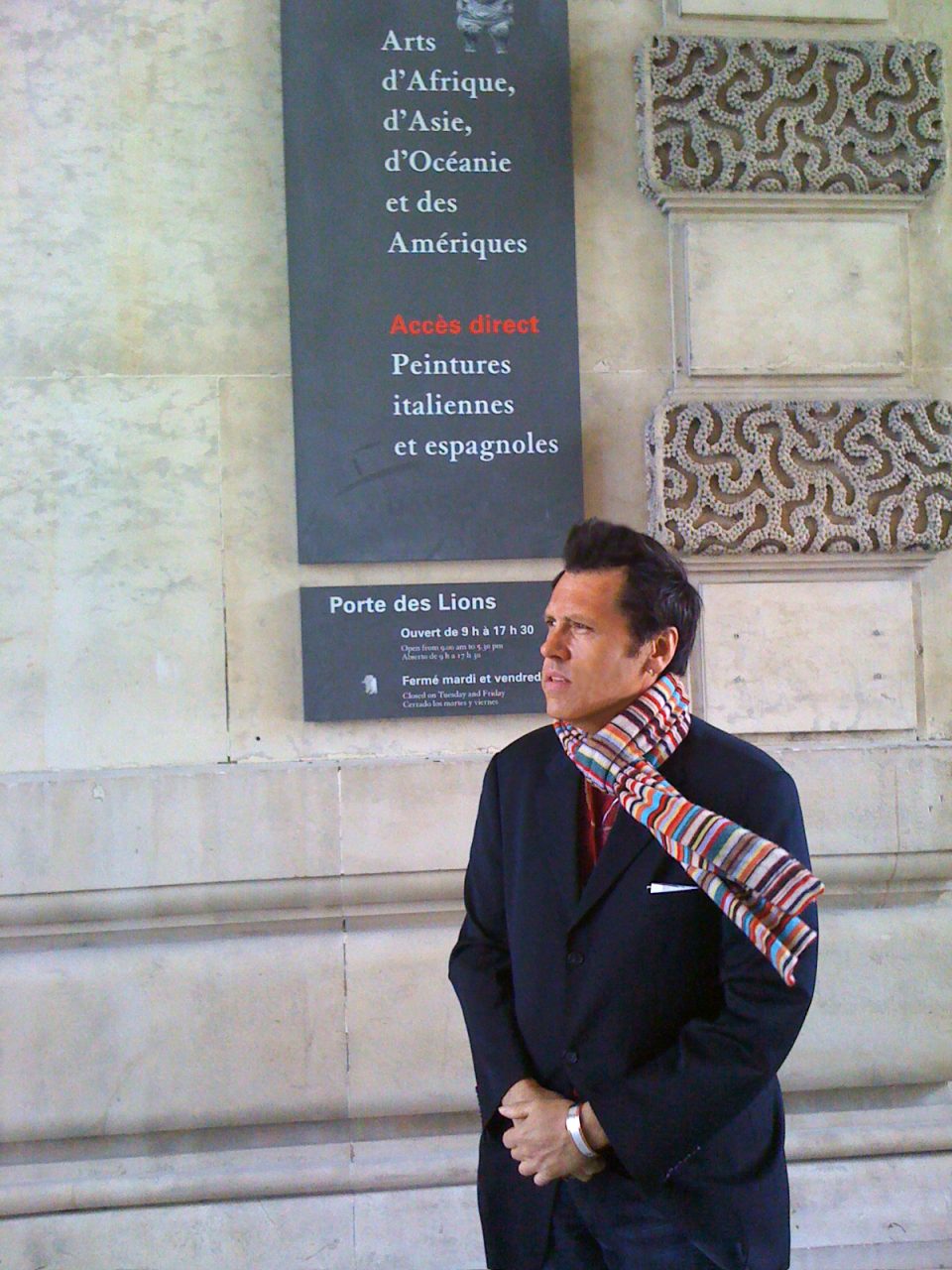 Porte des Lion - Louvre Museum
Porte des Lion - Louvre Museum 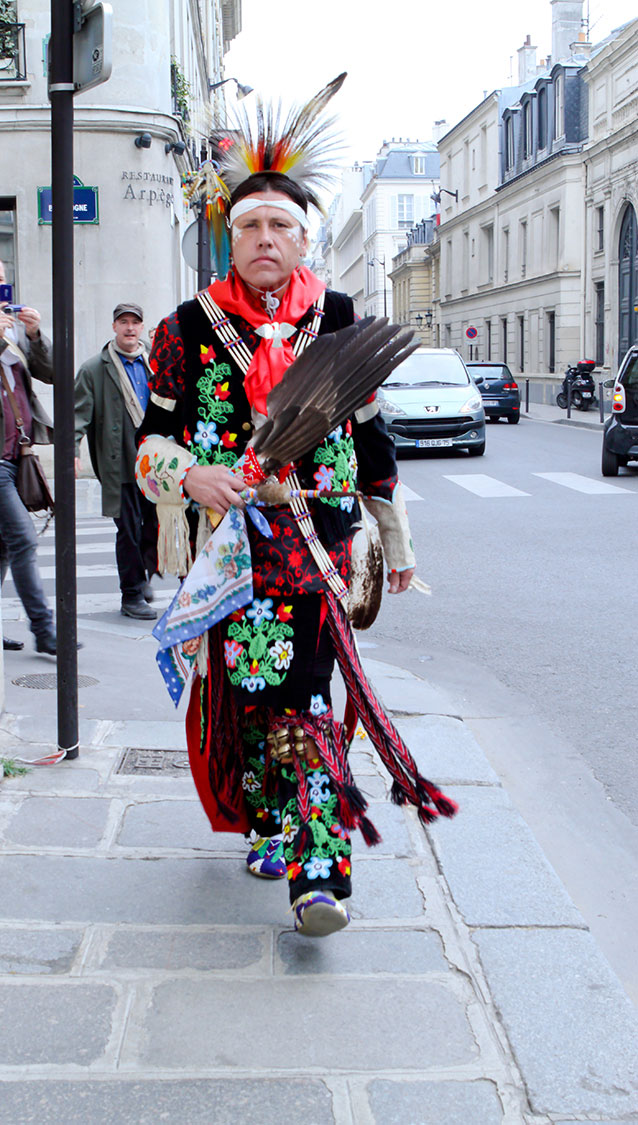 “Maungwudaus (Great Hero)” Performance at the Louvre, Paris (Image: Bonnie Devine)
“Maungwudaus (Great Hero)” Performance at the Louvre, Paris (Image: Bonnie Devine) 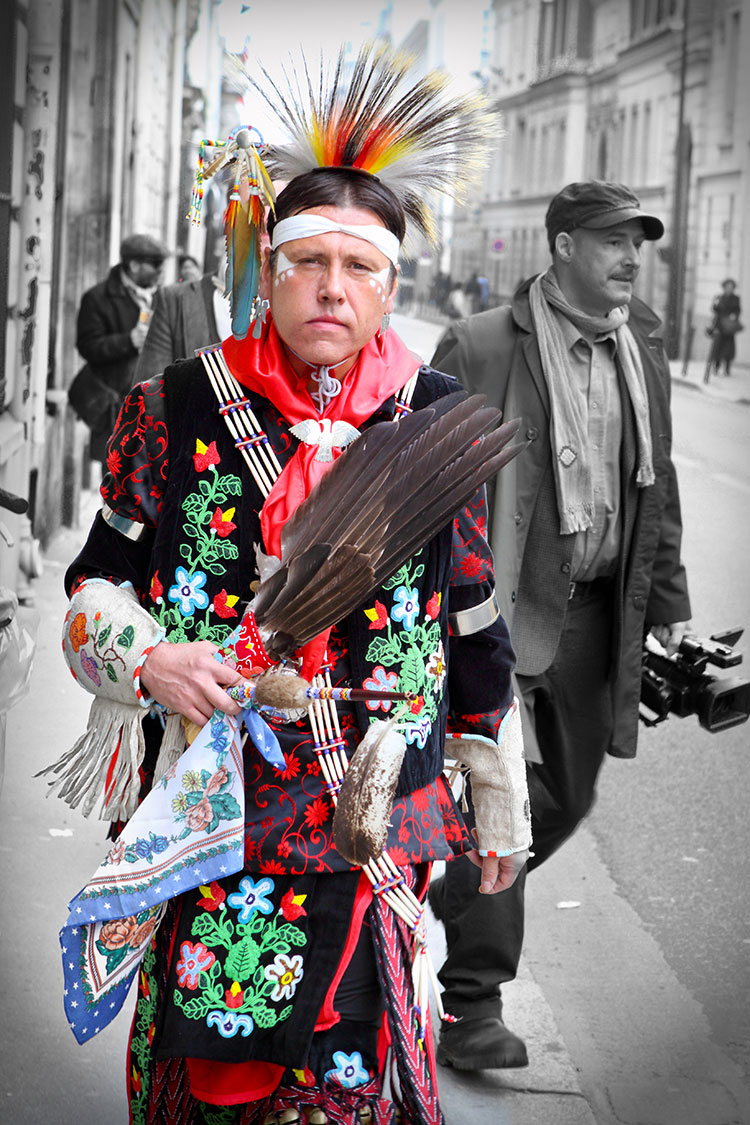 En Route to the Metro - Rue de Varenne, Paris (Image: Jason Jenkins)
En Route to the Metro - Rue de Varenne, Paris (Image: Jason Jenkins) 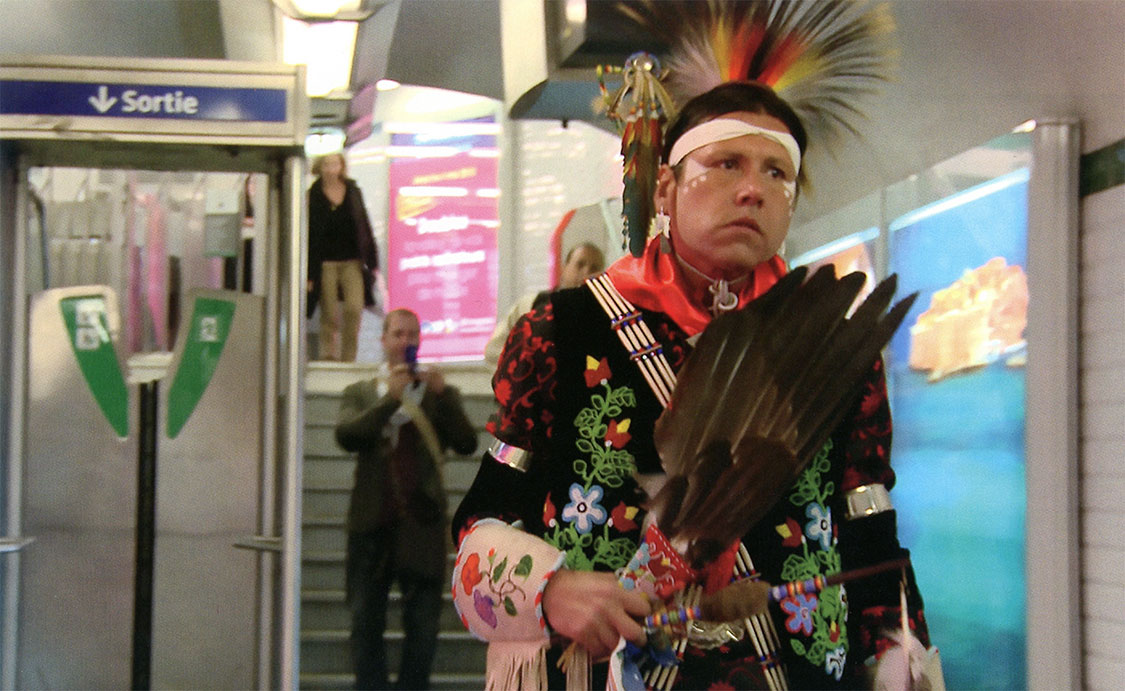 Riding the Metro en route to the Louvre (Screen capture: Shelley Niro)
Riding the Metro en route to the Louvre (Screen capture: Shelley Niro) 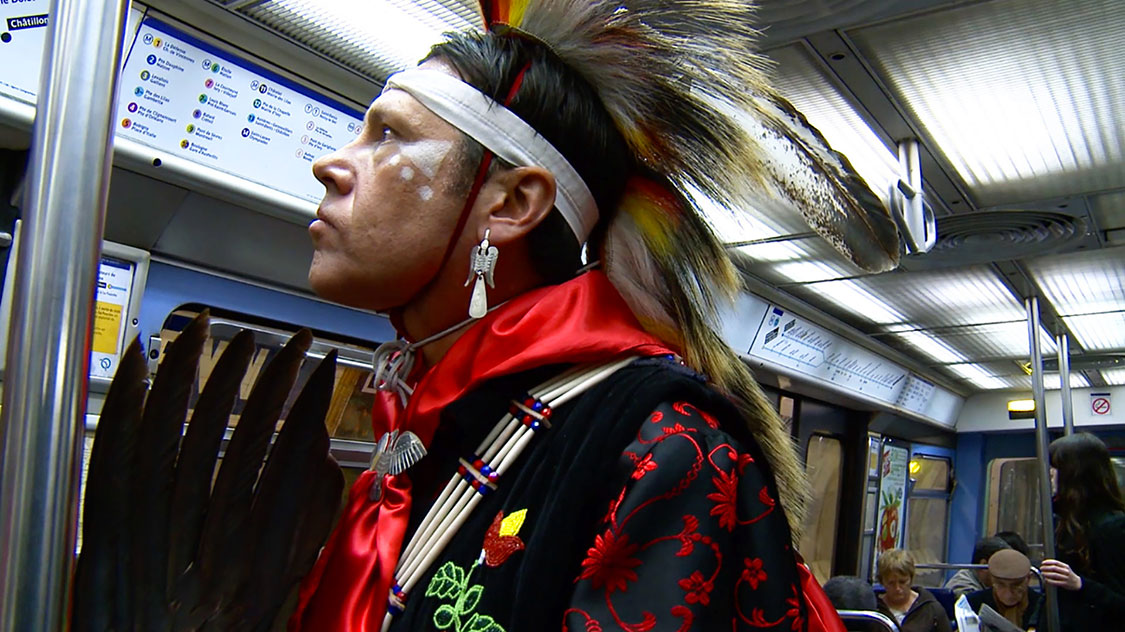 Riding the Metro en route to the Louvre (Screen capture: Shelley Niro)
Riding the Metro en route to the Louvre (Screen capture: Shelley Niro) 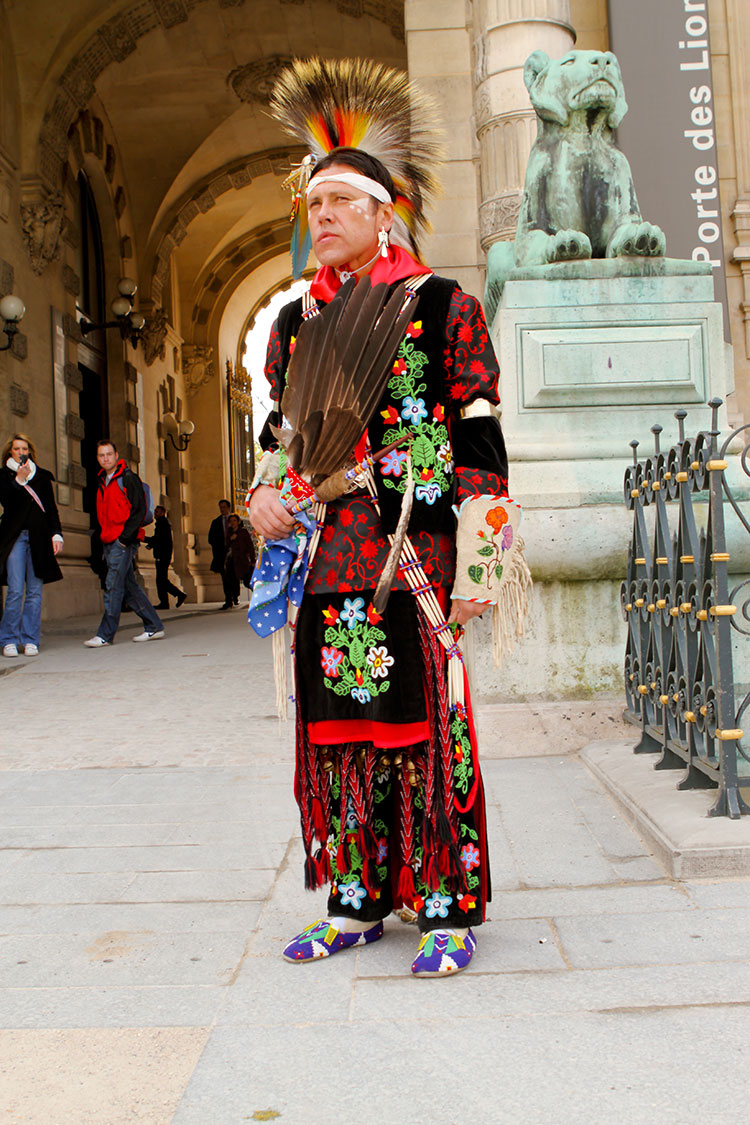 Outside the Porte des Lions, Musee du Louvre, Paris (Image: Jason Jenkins)
Outside the Porte des Lions, Musee du Louvre, Paris (Image: Jason Jenkins) 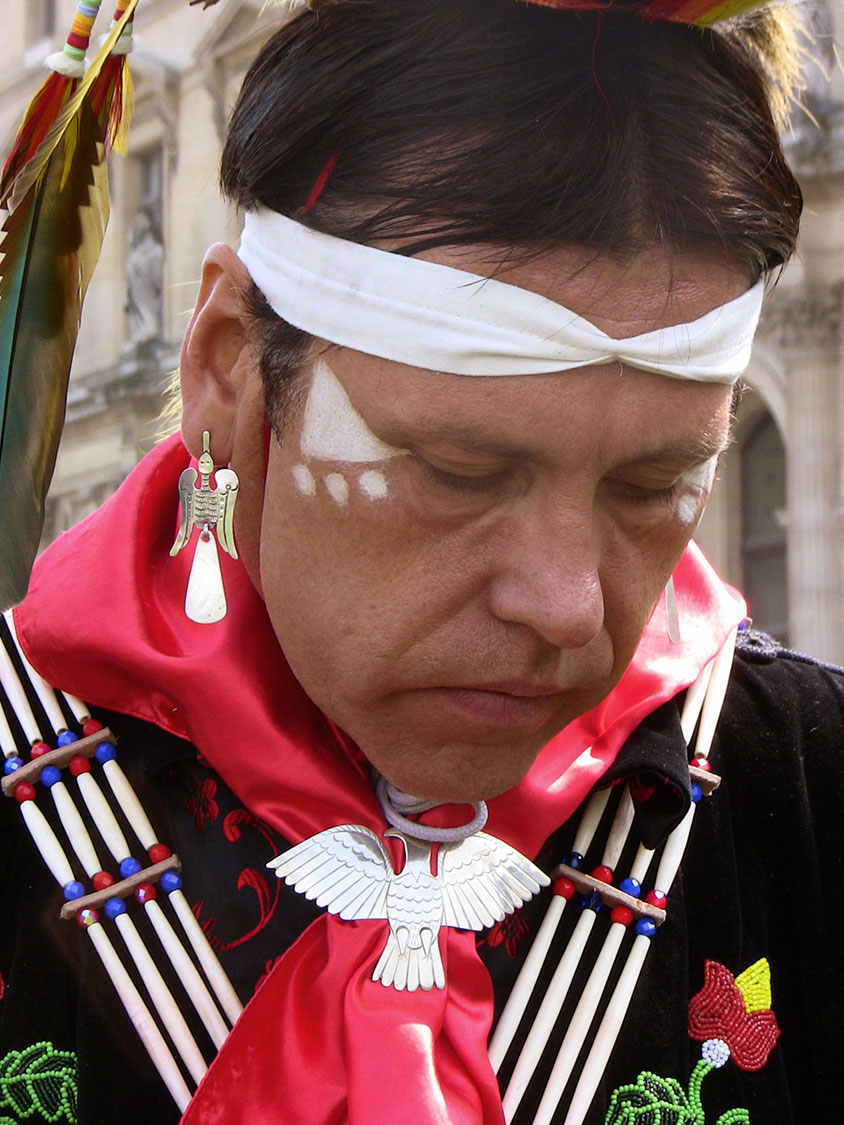 “Maungwudaus (Great Hero)” Performance at the Louvre, Paris (Image: Bonnie Devine)
“Maungwudaus (Great Hero)” Performance at the Louvre, Paris (Image: Bonnie Devine) 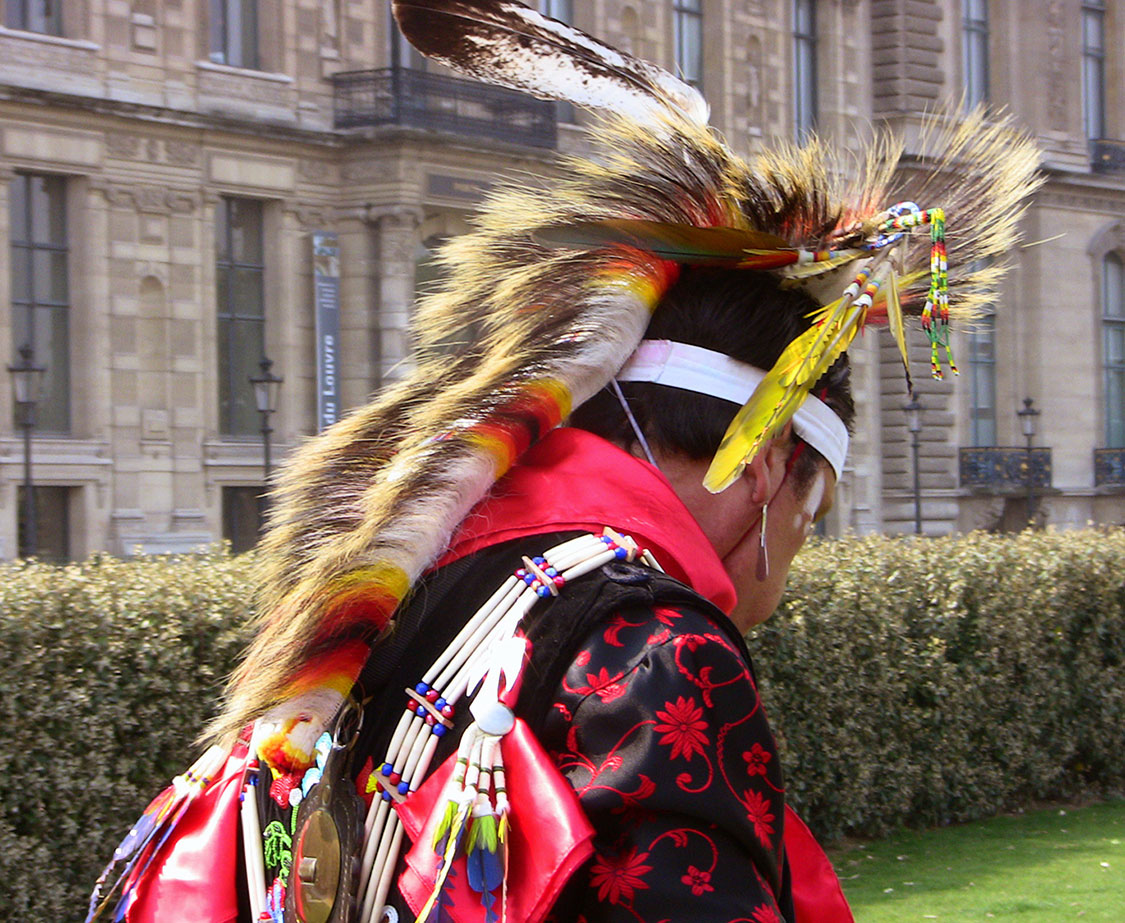 “Maungwudaus (Great Hero)” Performance at the Louvre, Paris (Image: Bonnie Devine)
“Maungwudaus (Great Hero)” Performance at the Louvre, Paris (Image: Bonnie Devine) 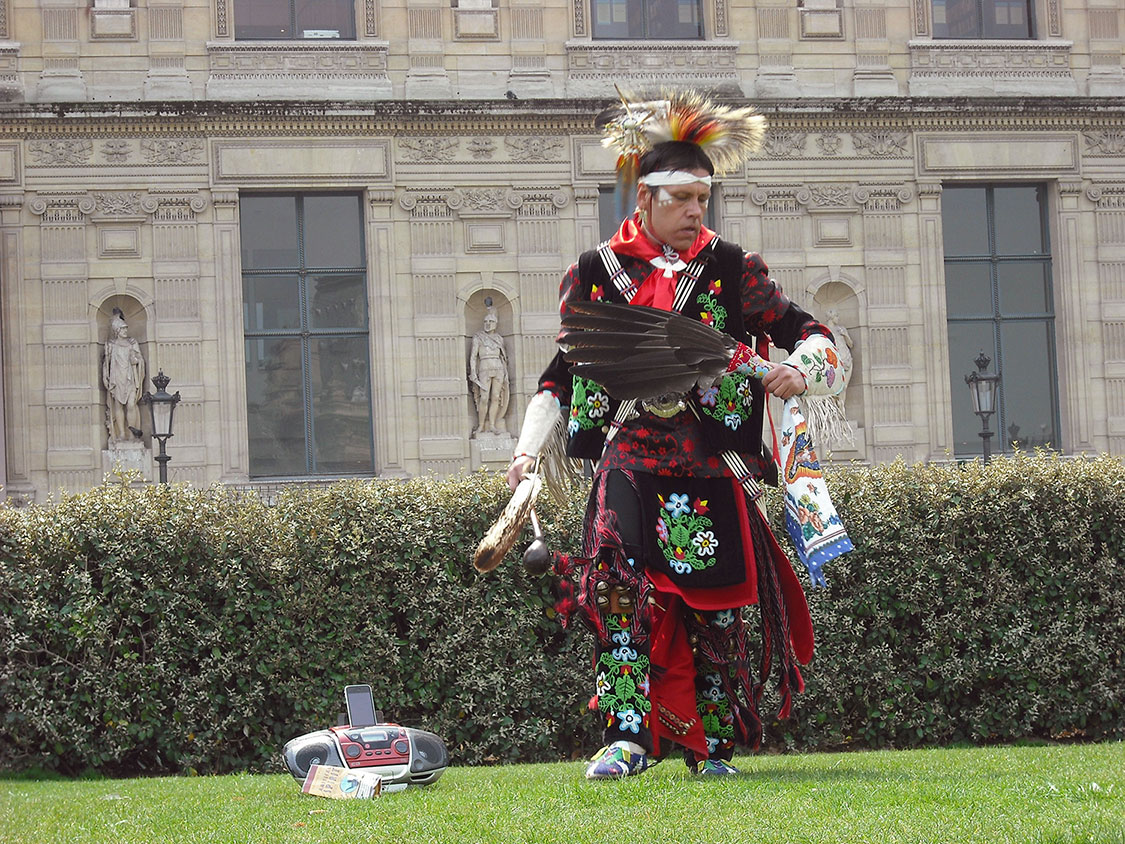 “Maungwudaus (Great Hero)” Performance at the Louvre, Paris (Image: Jason Jenkins)
“Maungwudaus (Great Hero)” Performance at the Louvre, Paris (Image: Jason Jenkins) 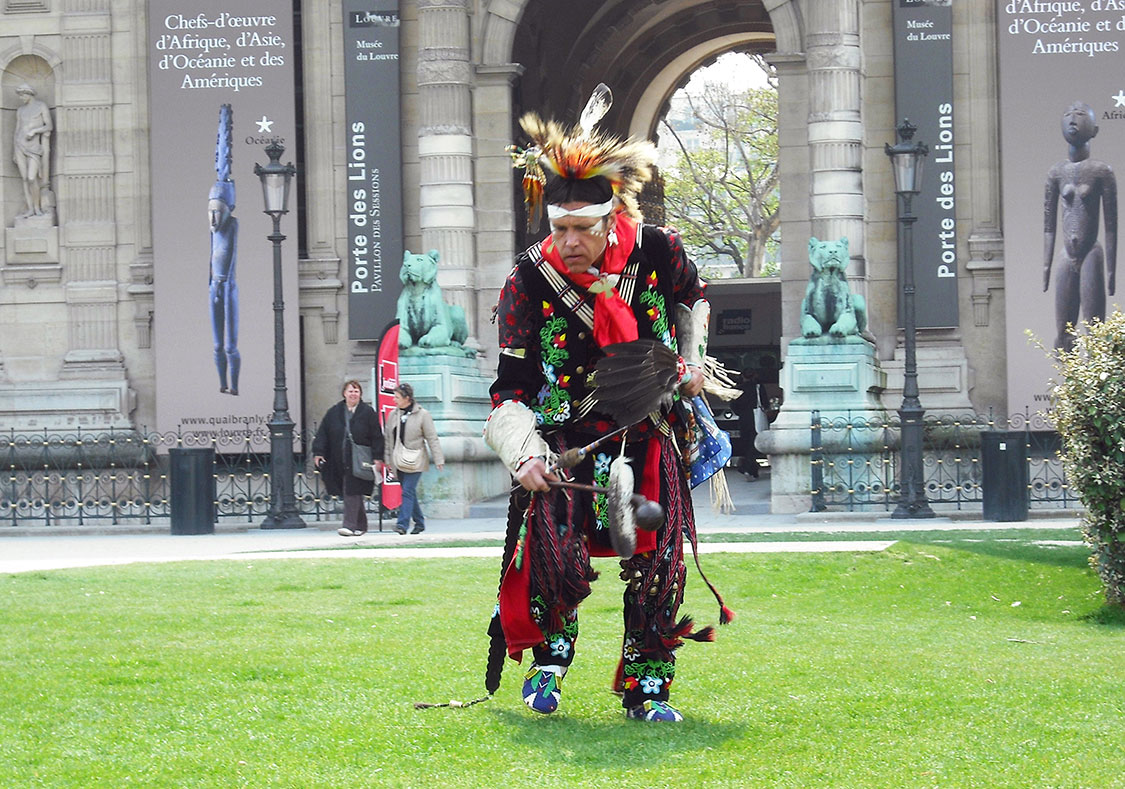 “Maungwudaus (Great Hero)” Performance at the Louvre, Paris (Image: Jason Jenkins)
“Maungwudaus (Great Hero)” Performance at the Louvre, Paris (Image: Jason Jenkins) 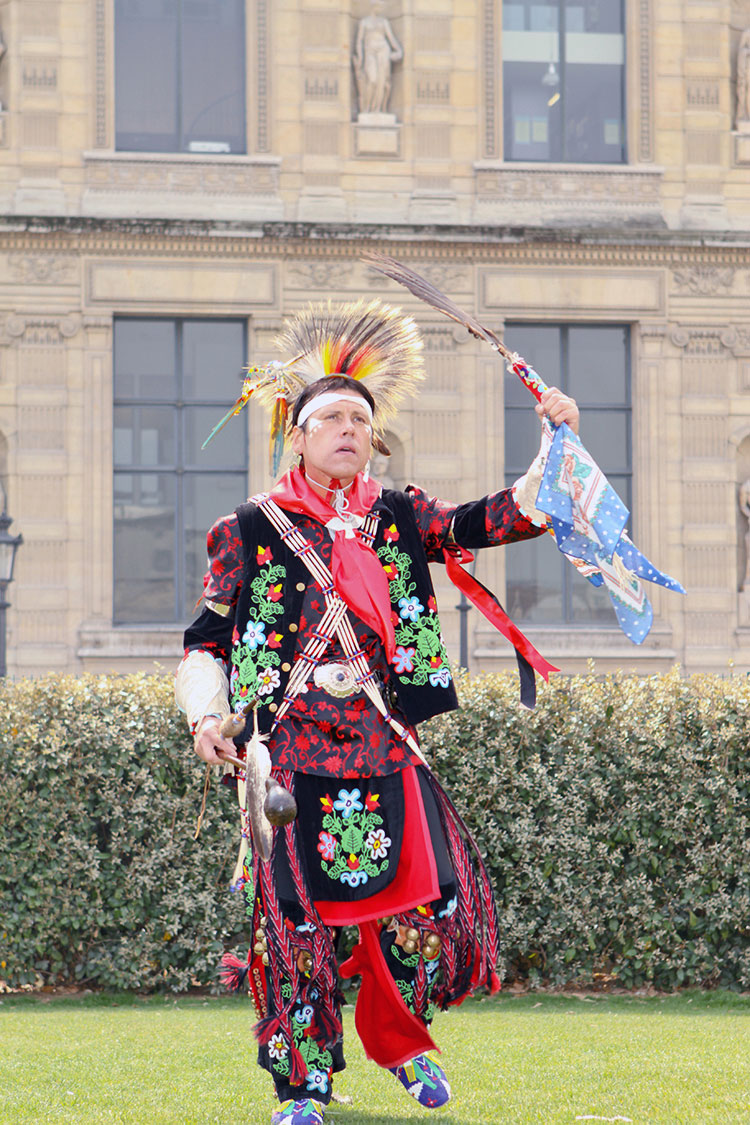 “Maungwudaus (Great Hero)” Performance at the Louvre, Paris (Image: Jason Jenkins)
“Maungwudaus (Great Hero)” Performance at the Louvre, Paris (Image: Jason Jenkins) 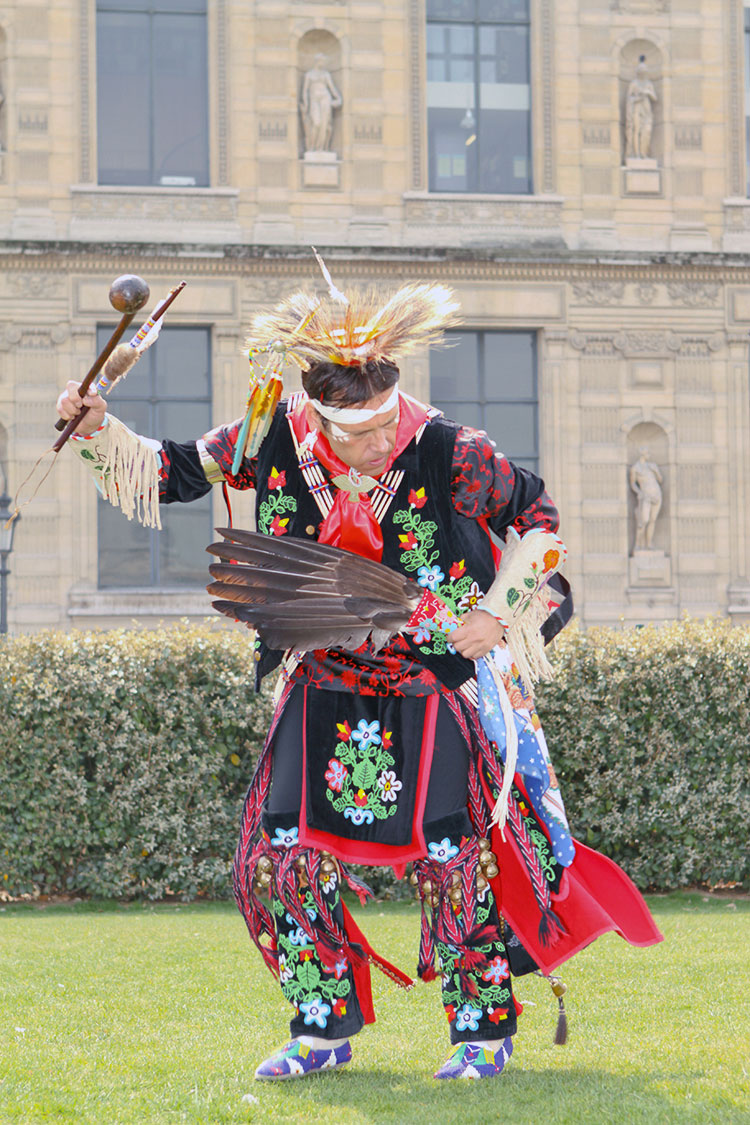 “Maungwudaus (Great Hero)” Performance at the Louvre, Paris (Image: Jason Jenkins)
“Maungwudaus (Great Hero)” Performance at the Louvre, Paris (Image: Jason Jenkins) 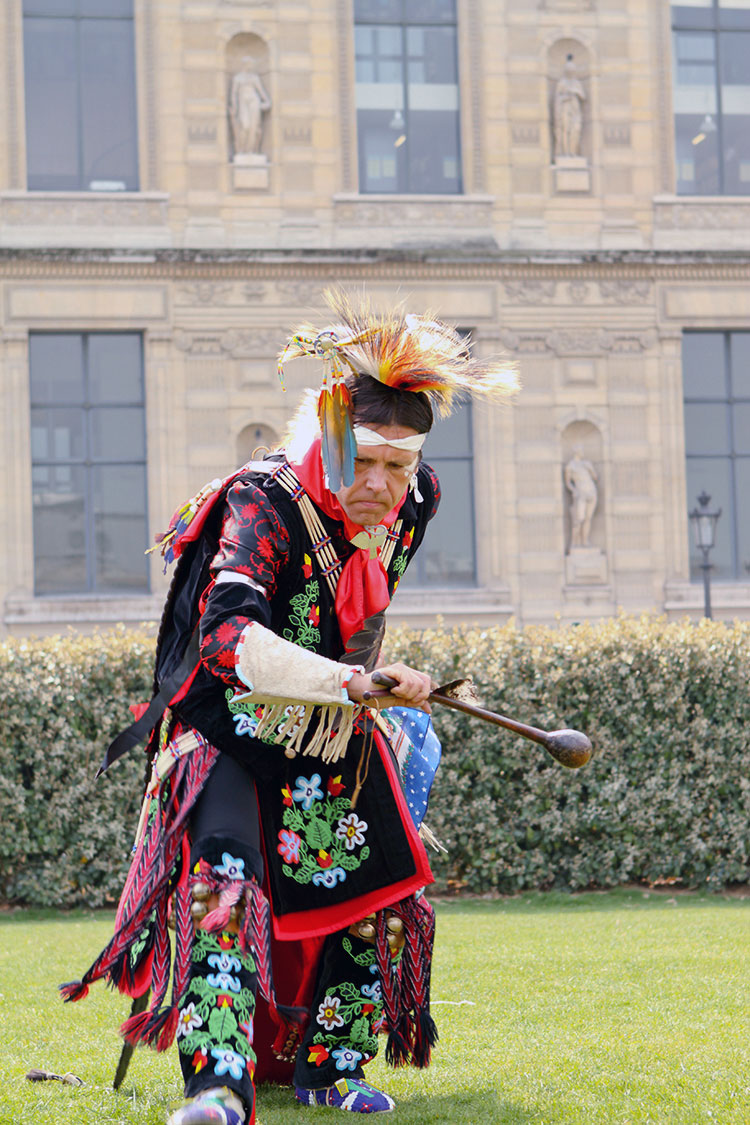 “Maungwudaus (Great Hero)” Performance at the Louvre, Paris (Image: Jason Jenkins)
“Maungwudaus (Great Hero)” Performance at the Louvre, Paris (Image: Jason Jenkins) 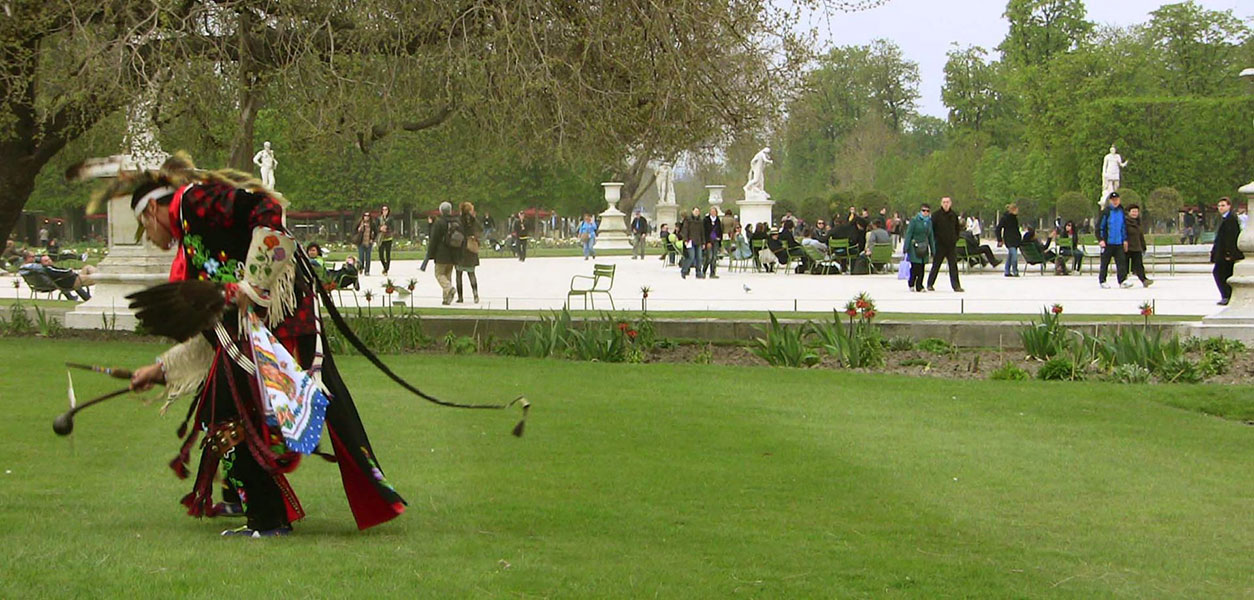 “Noodinokay (Furious Storm)” Performance in the Jardin des Tuileries (Image: Bonnie Devine)
“Noodinokay (Furious Storm)” Performance in the Jardin des Tuileries (Image: Bonnie Devine) 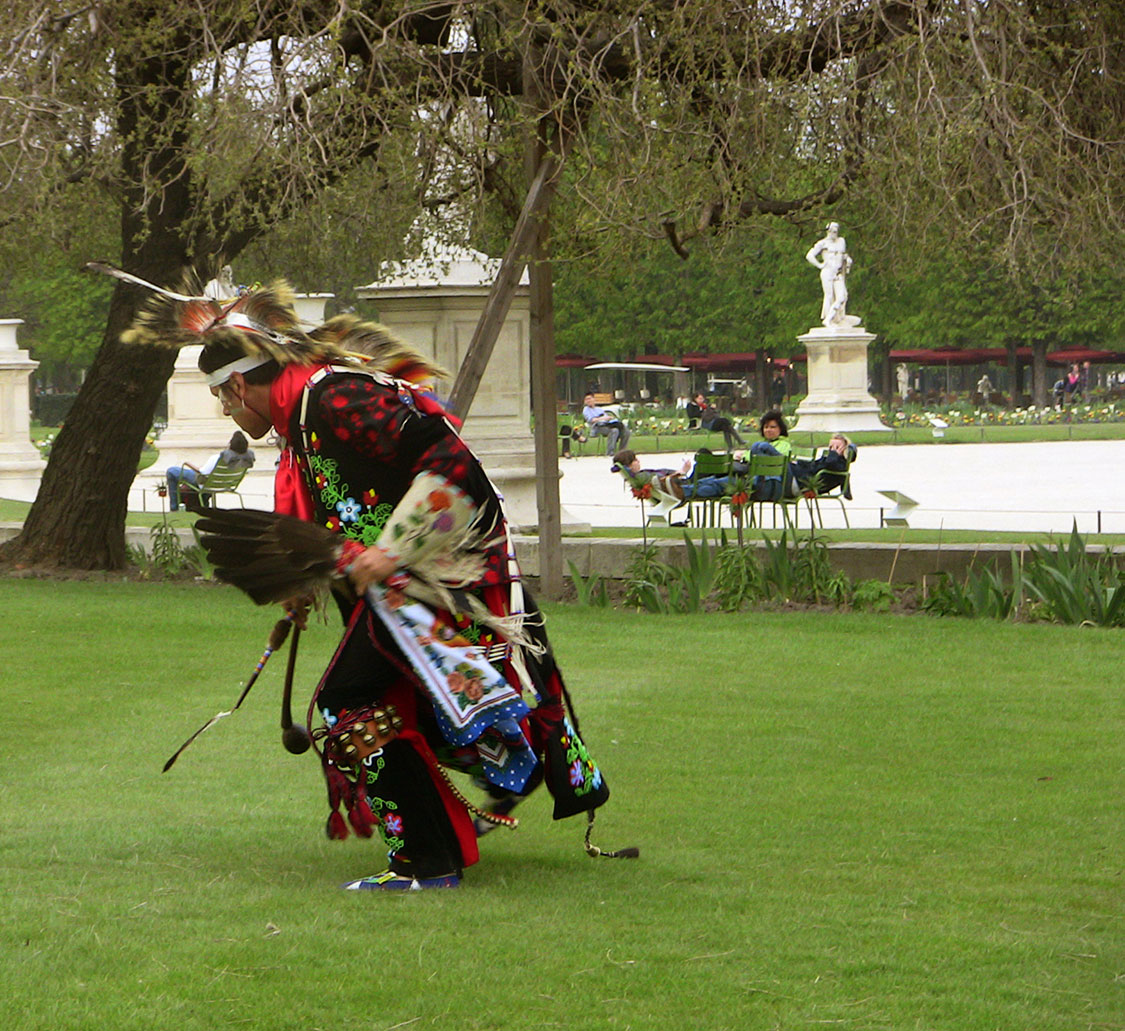 “Noodinokay (Furious Storm)” Performance in the Jardin des Tuileries (Image: Bonnie Devine)
“Noodinokay (Furious Storm)” Performance in the Jardin des Tuileries (Image: Bonnie Devine) 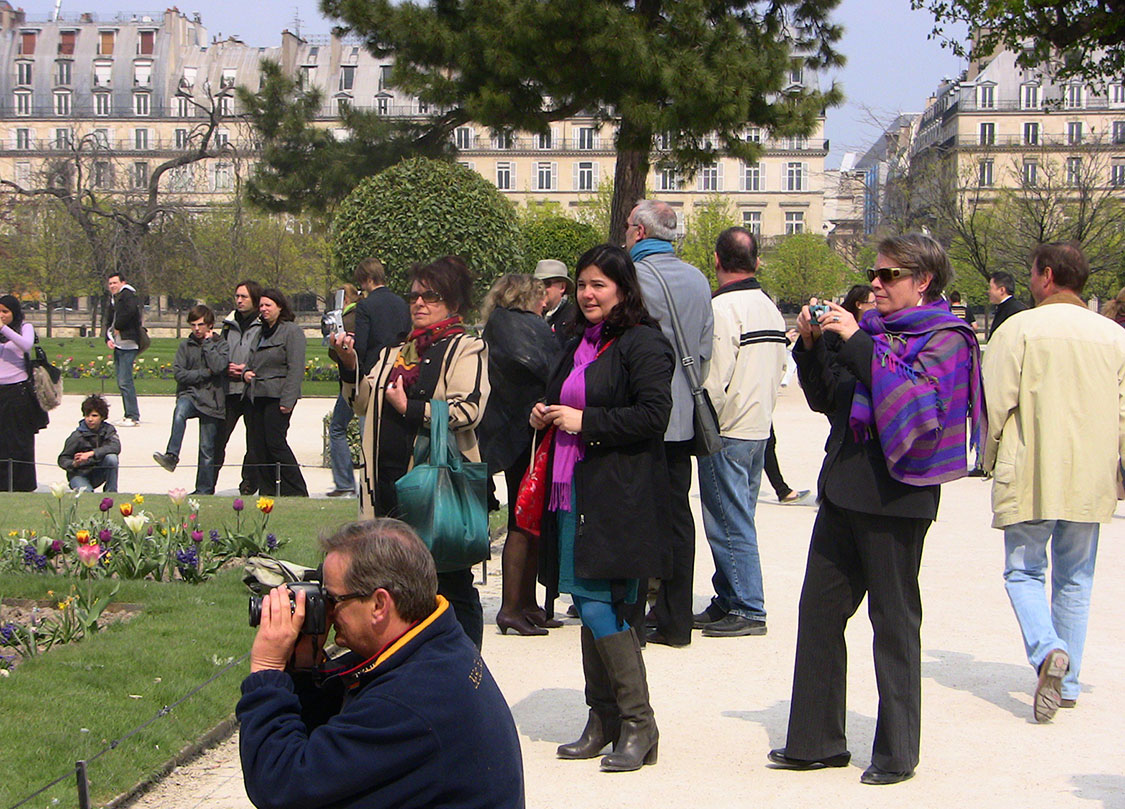 “Noodinokay (Furious Storm)” Performance in the Jardin des Tuileries (Image: Bonnie Devine)
“Noodinokay (Furious Storm)” Performance in the Jardin des Tuileries (Image: Bonnie Devine) 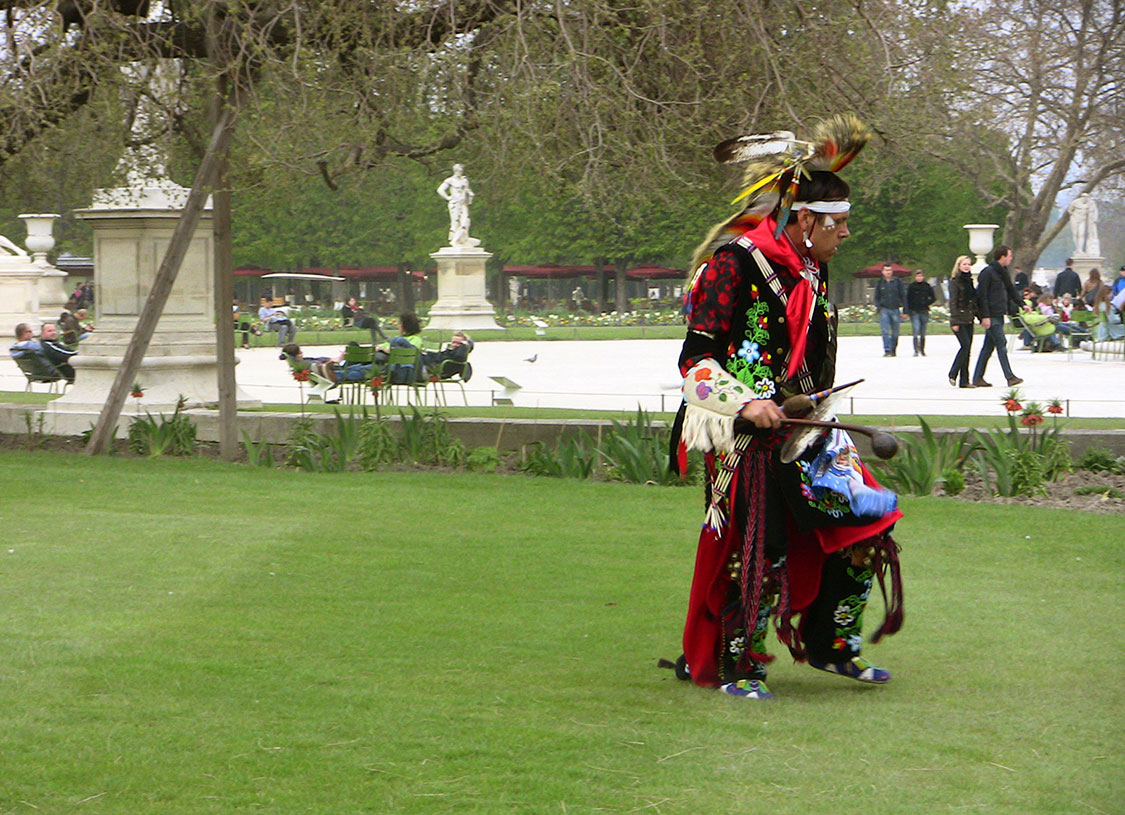 “Noodinokay (Furious Storm)” Performance in the Jardin des Tuileries (Image: Bonnie Devine)
“Noodinokay (Furious Storm)” Performance in the Jardin des Tuileries (Image: Bonnie Devine) 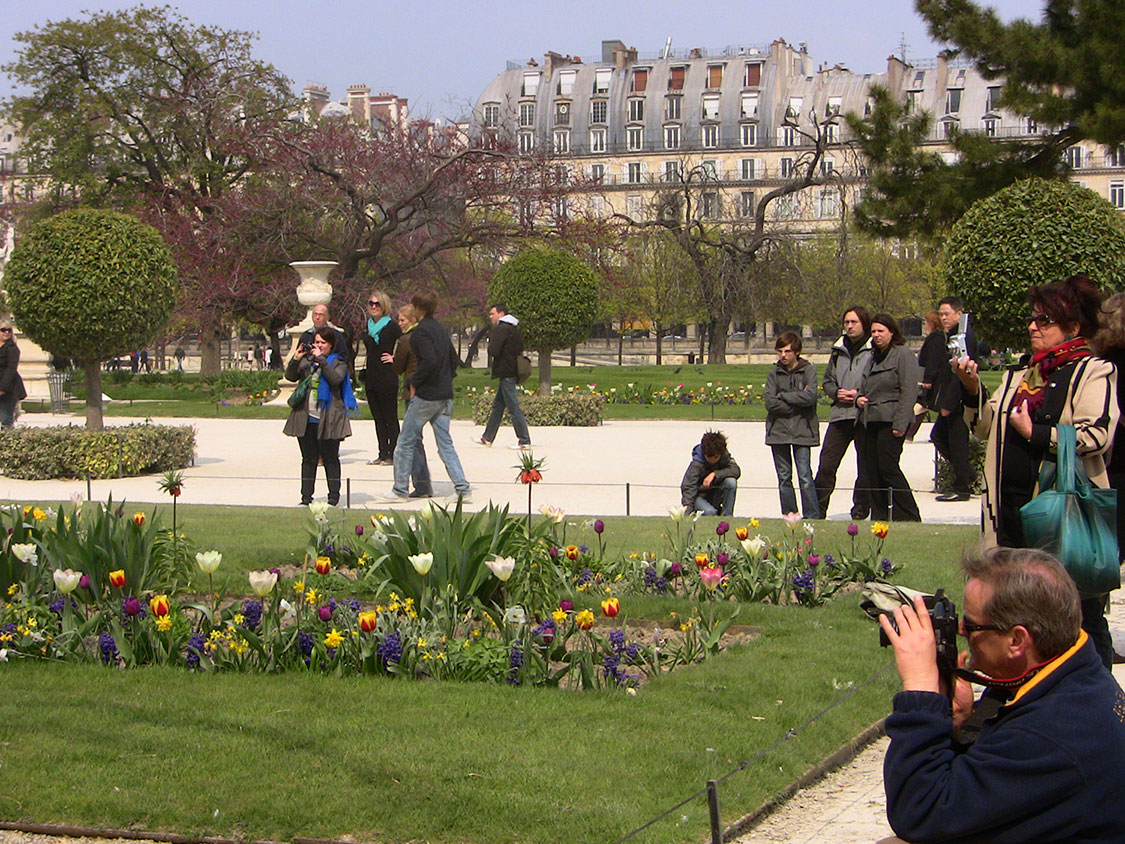 “Noodinokay (Furious Storm)” Performance in the Jardin des Tuileries (Image: Bonnie Devine)
“Noodinokay (Furious Storm)” Performance in the Jardin des Tuileries (Image: Bonnie Devine) 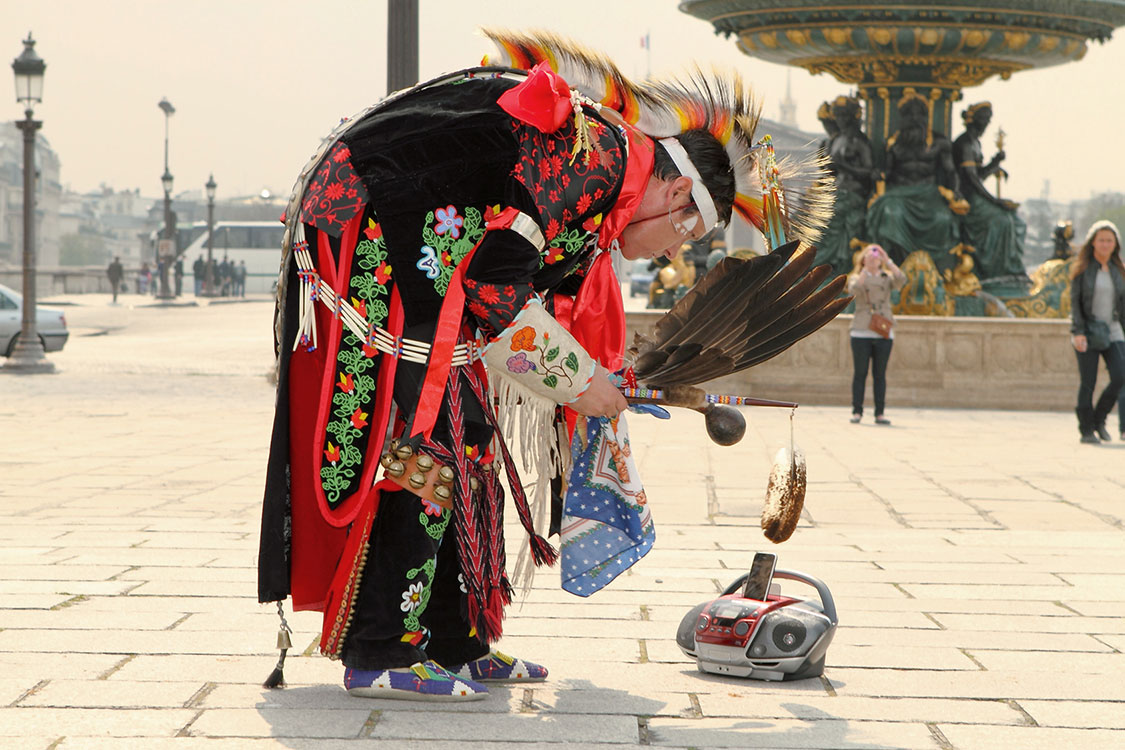 “Mishshemong (King of the Loons)” Performance at Place de la Concorde, Paris (Photo: Jason Jenkins)
“Mishshemong (King of the Loons)” Performance at Place de la Concorde, Paris (Photo: Jason Jenkins) 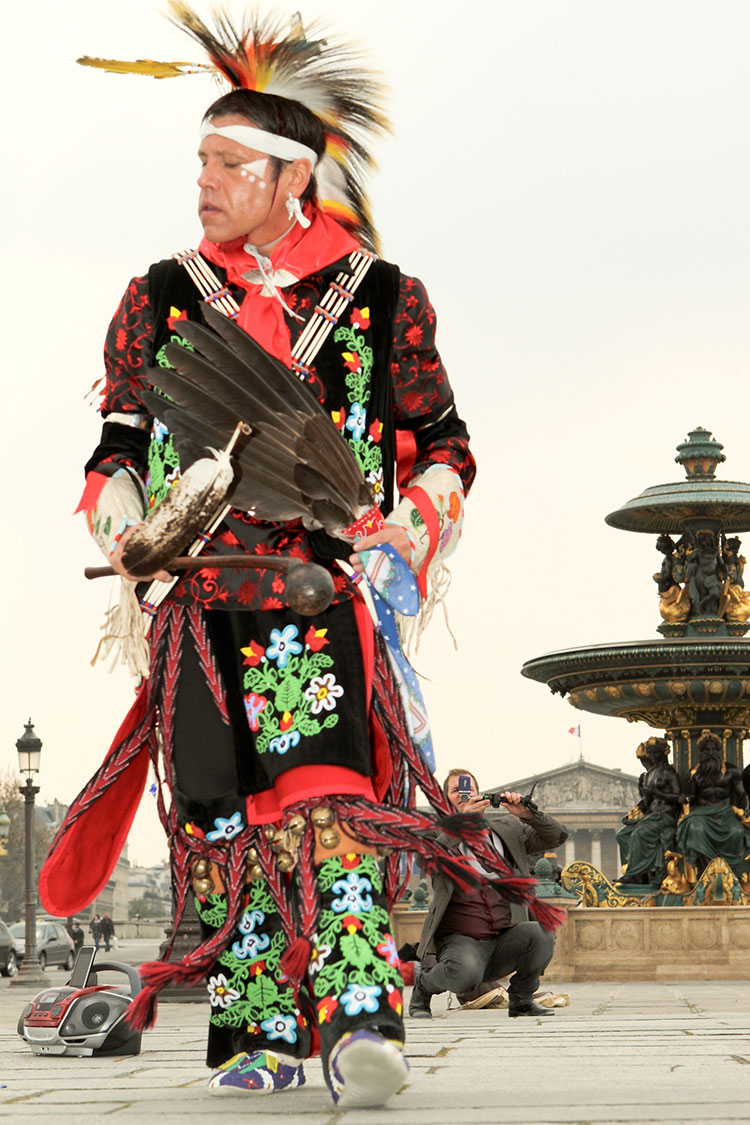 “Mishshemong (King of the Loons)” Performance at Place de la Concorde, Paris (Photo: Jason Jenkins)
“Mishshemong (King of the Loons)” Performance at Place de la Concorde, Paris (Photo: Jason Jenkins) 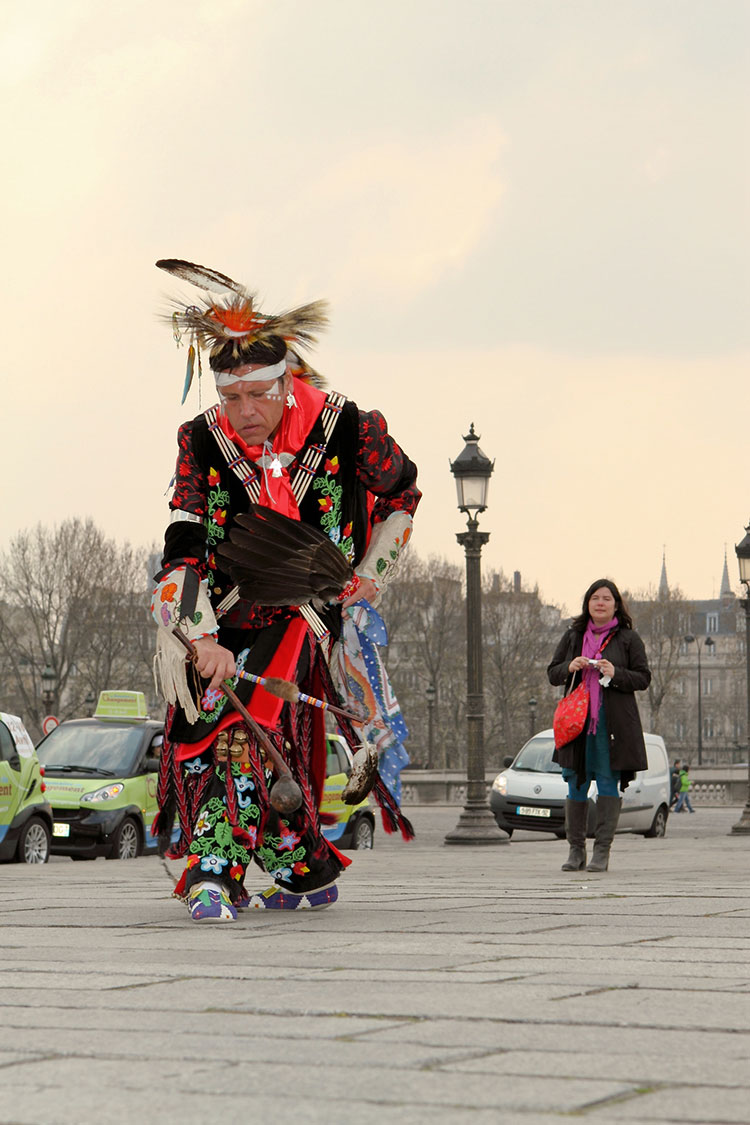 “Mishshemong (King of the Loons)” Performance at Place de la Concorde, Paris (Photo: Jason Jenkins)
“Mishshemong (King of the Loons)” Performance at Place de la Concorde, Paris (Photo: Jason Jenkins) 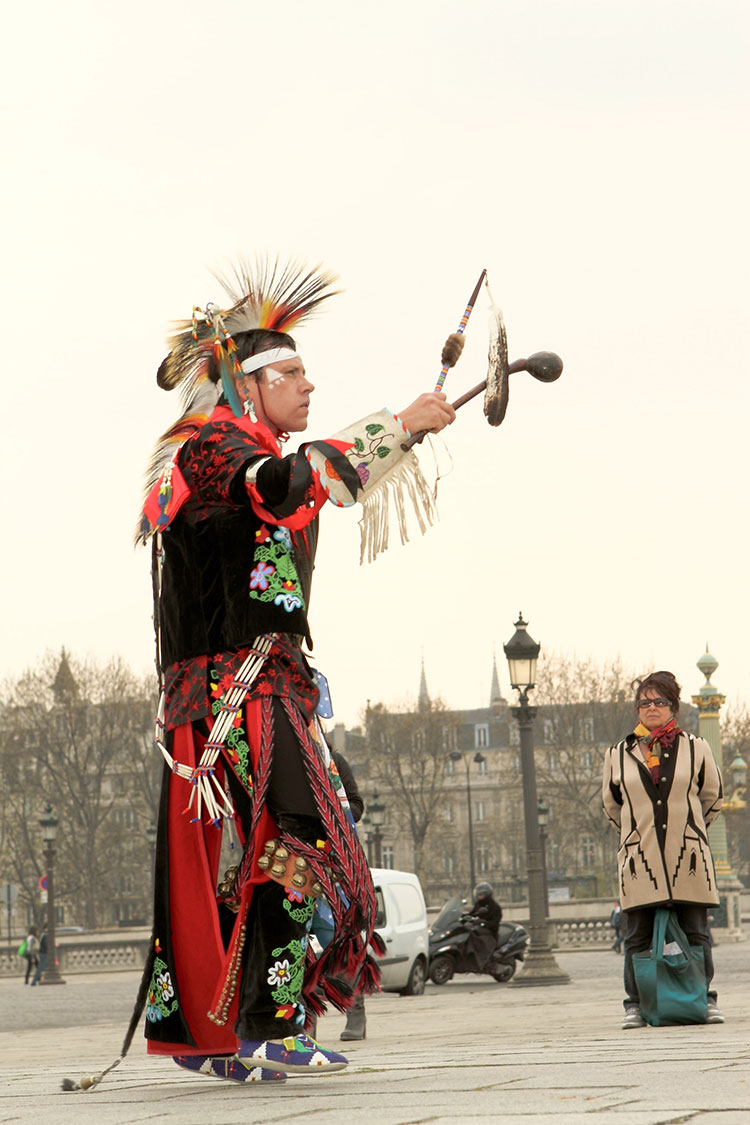 “Mishshemong (King of the Loons)” Performance at Place de la Concorde, Paris (Photo: Jason Jenkins)
“Mishshemong (King of the Loons)” Performance at Place de la Concorde, Paris (Photo: Jason Jenkins) 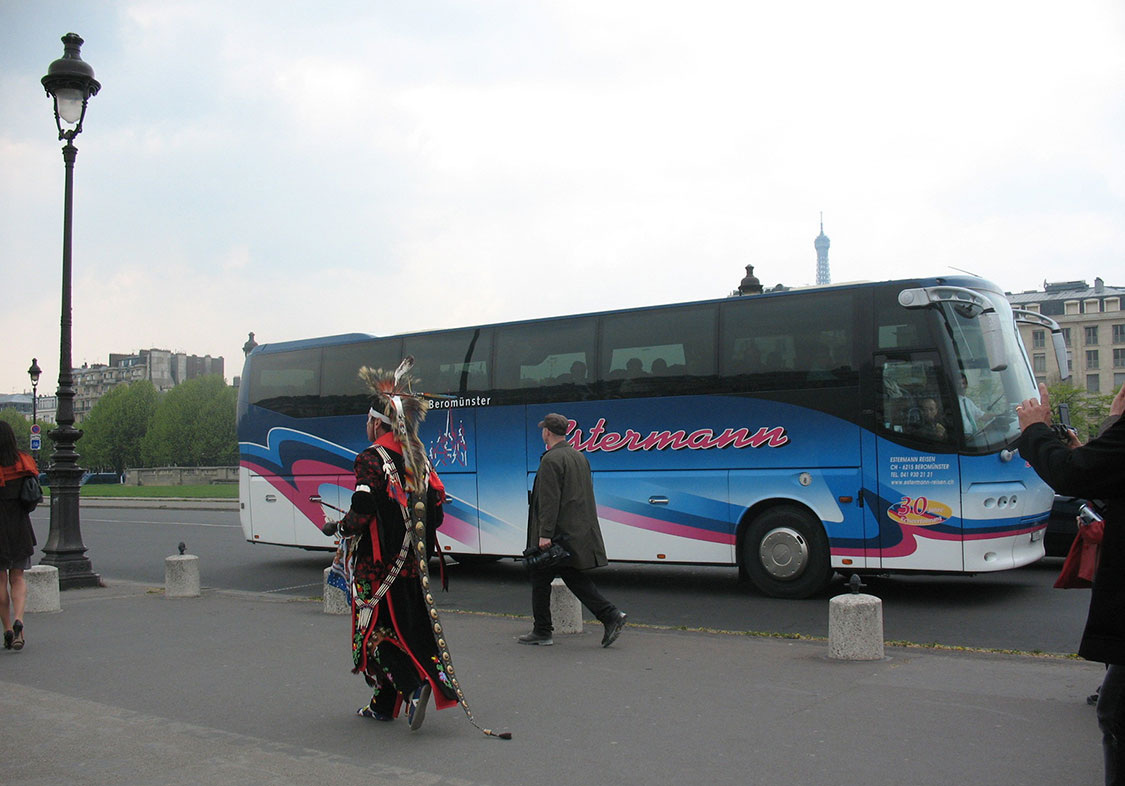 En Route to Canadian Cultural Centre, Pont Alexandre III, Paris (Image: Bonnie Devine)
En Route to Canadian Cultural Centre, Pont Alexandre III, Paris (Image: Bonnie Devine)  “Saysaygon (Hail Storm)” Performance in L’Esplanade des Invalides, Paris (Image: Jason Jenkins)
“Saysaygon (Hail Storm)” Performance in L’Esplanade des Invalides, Paris (Image: Jason Jenkins) 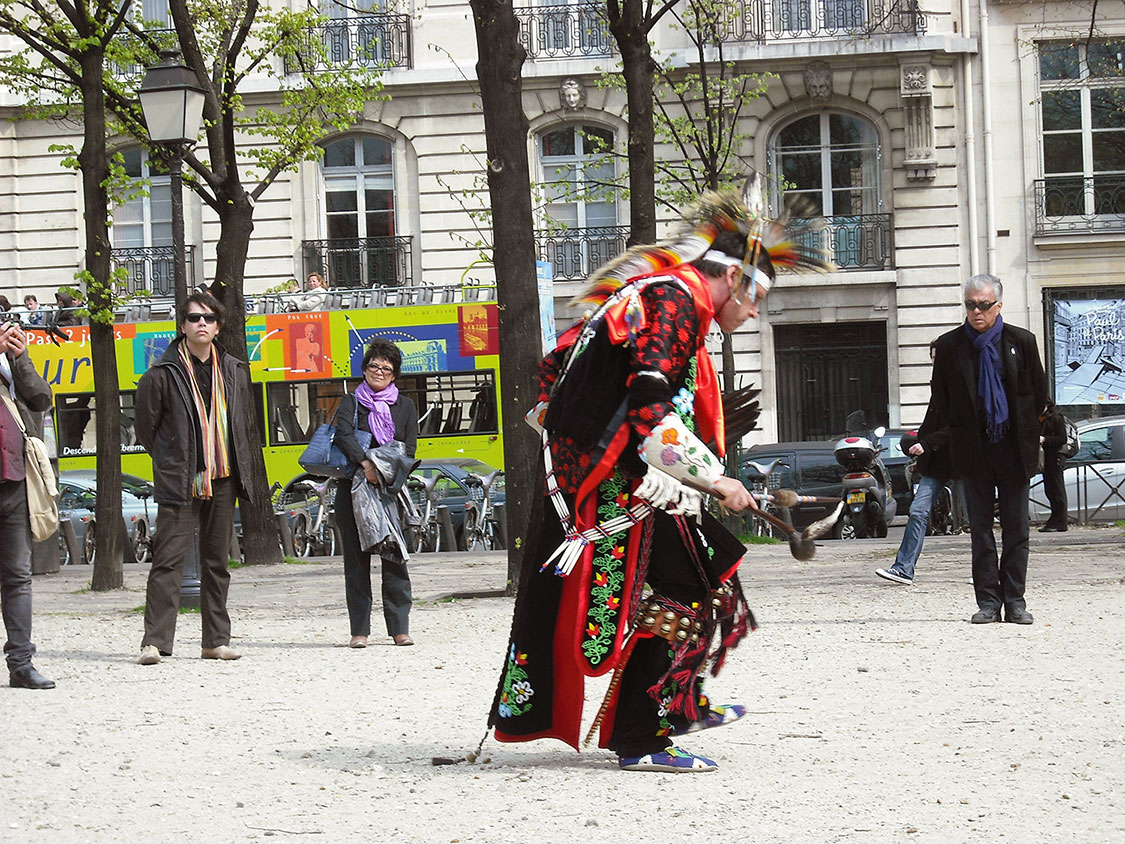 “Saysaygon (Hail Storm)” Performance in L’Esplanade des Invalides, Paris (Image: Jason Jenkins)
“Saysaygon (Hail Storm)” Performance in L’Esplanade des Invalides, Paris (Image: Jason Jenkins) 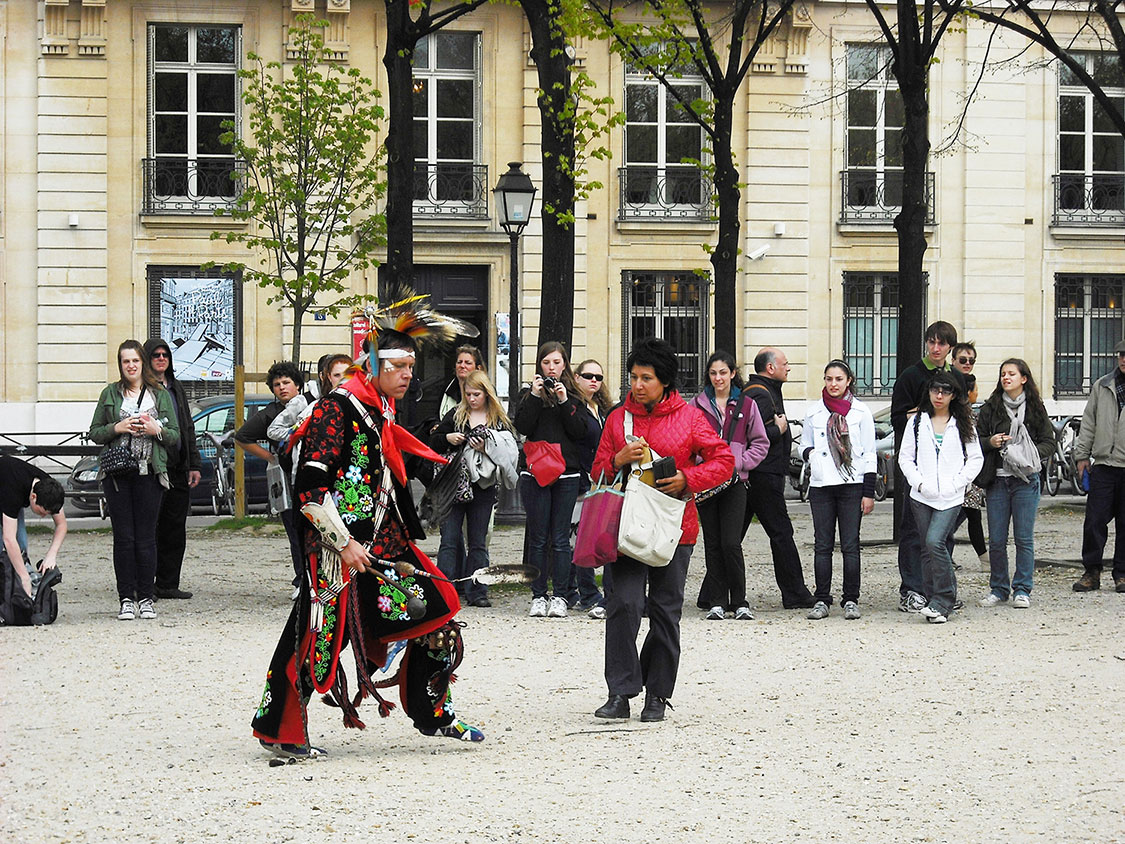 Unknown woman approaches to offer a Euro during performance for Saysaygon (Image: Jason Jenkins)
Unknown woman approaches to offer a Euro during performance for Saysaygon (Image: Jason Jenkins) 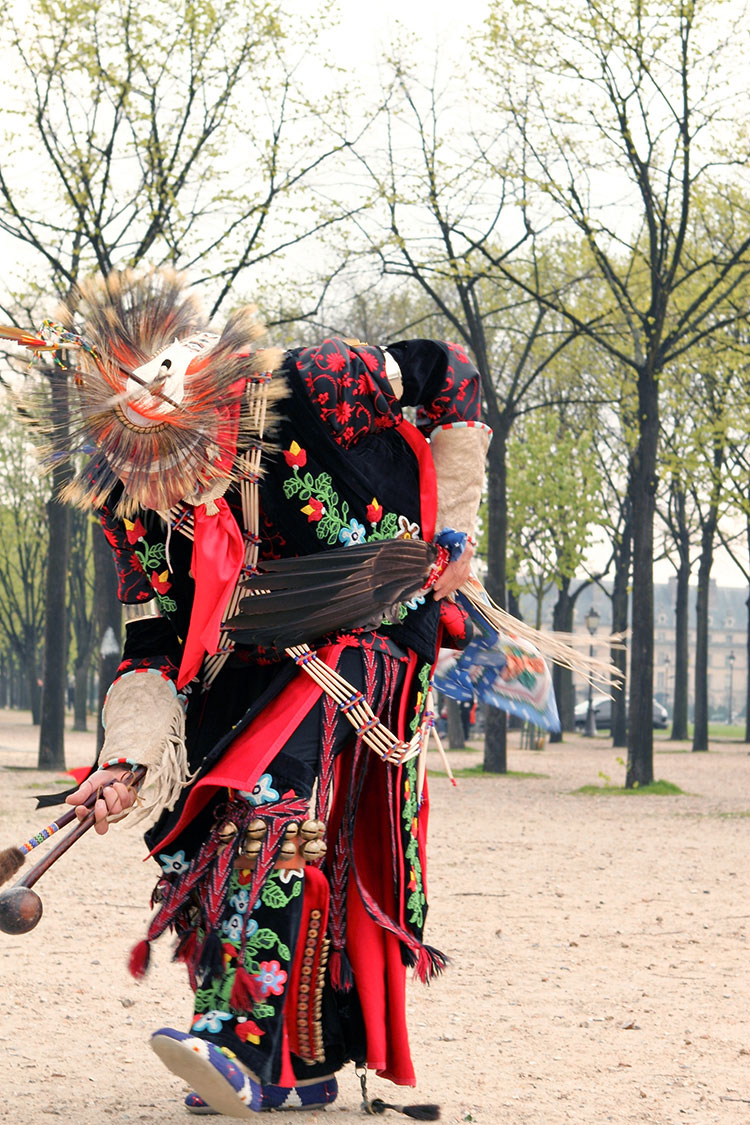 “Saysaygon (Hail Storm)” Performance in L’Esplanade des Invalides, Paris (Image: Jason Jenkins)
“Saysaygon (Hail Storm)” Performance in L’Esplanade des Invalides, Paris (Image: Jason Jenkins) 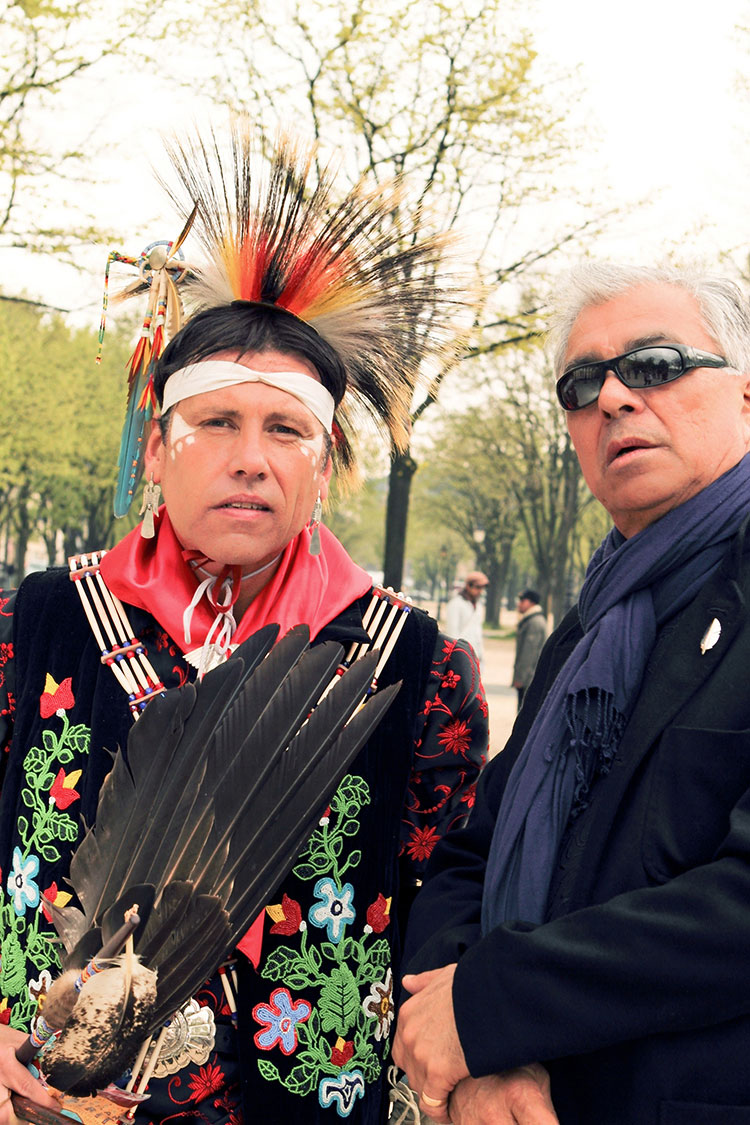 Barry Ace with Robert Houle at L’Esplanade des Invalides, Paris (Image: Jason Jenkins)
Barry Ace with Robert Houle at L’Esplanade des Invalides, Paris (Image: Jason Jenkins) 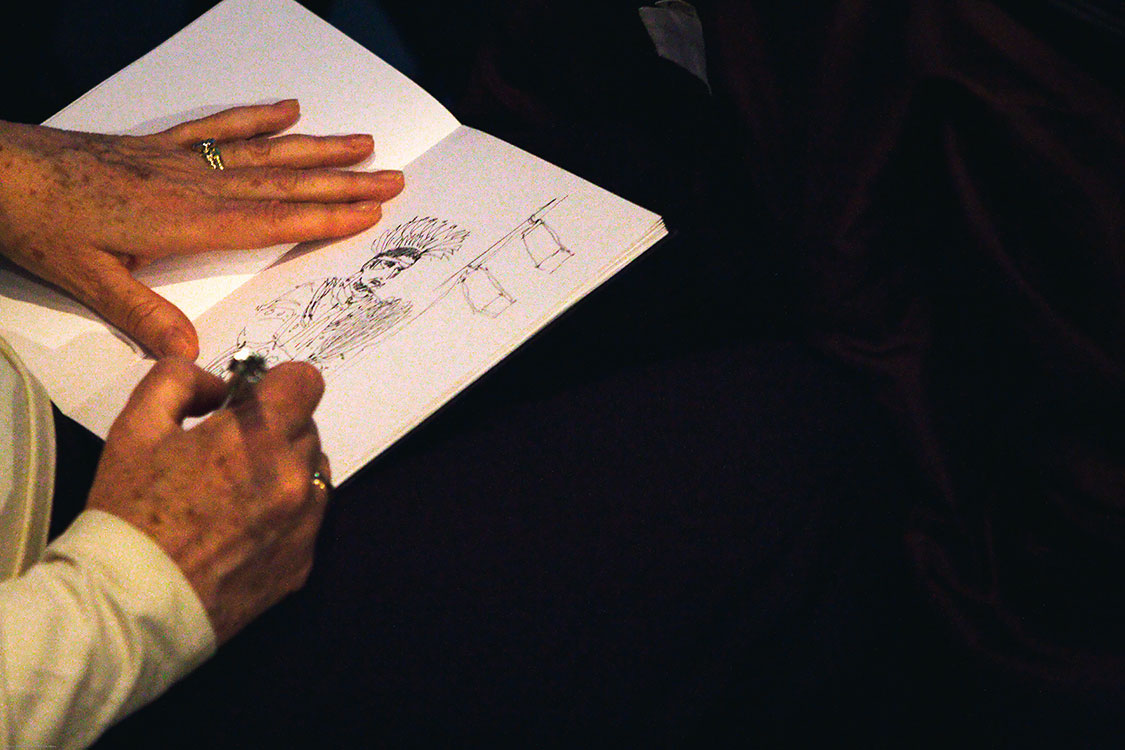 Patricia Dunn wife of Canadian Ambassador Marc Lortie sketching Barry Ace reclining after performances.
Patricia Dunn wife of Canadian Ambassador Marc Lortie sketching Barry Ace reclining after performances. 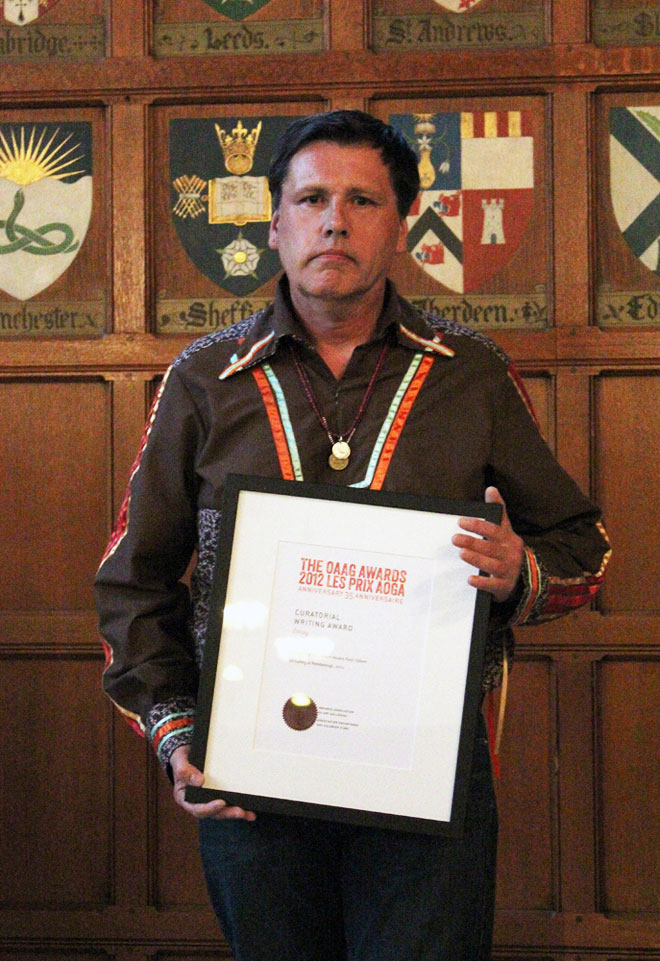 OAAG Award Ceremony - Rodman Hall,University of Toronto (2012)
OAAG Award Ceremony - Rodman Hall,University of Toronto (2012) 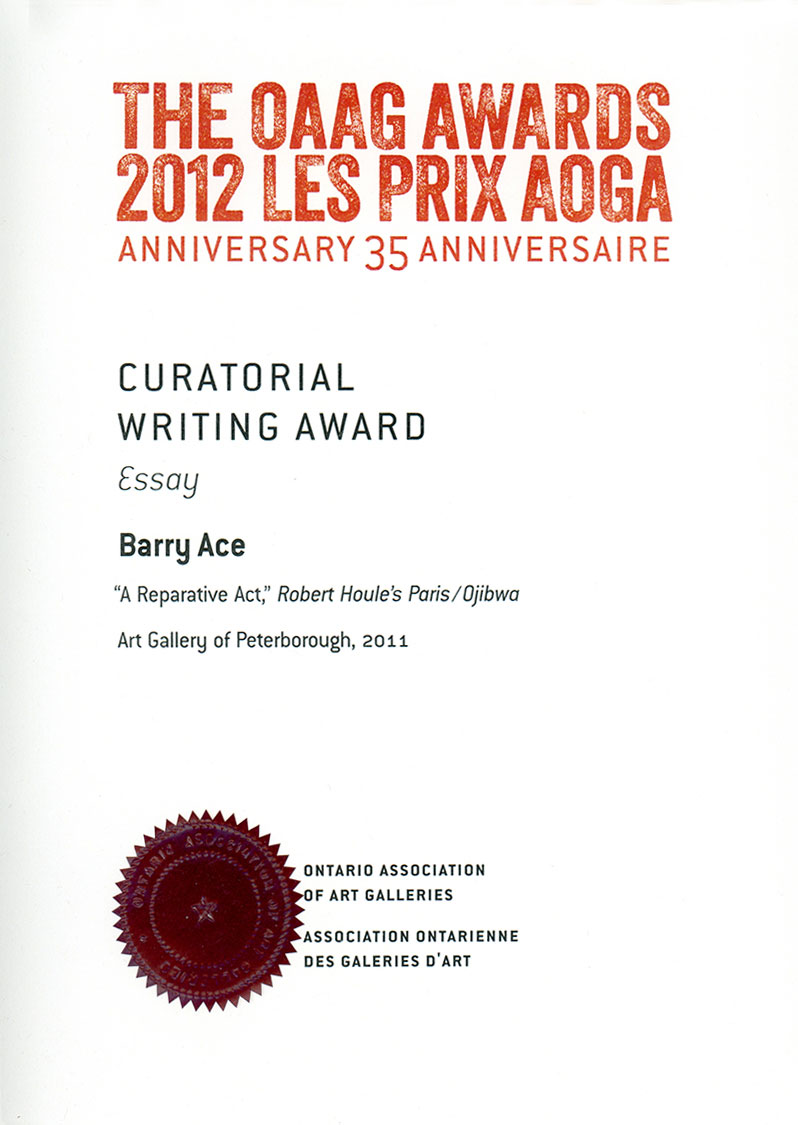 Ontario Association of Art Galleries Curatorial Writing Award 2012
Ontario Association of Art Galleries Curatorial Writing Award 2012